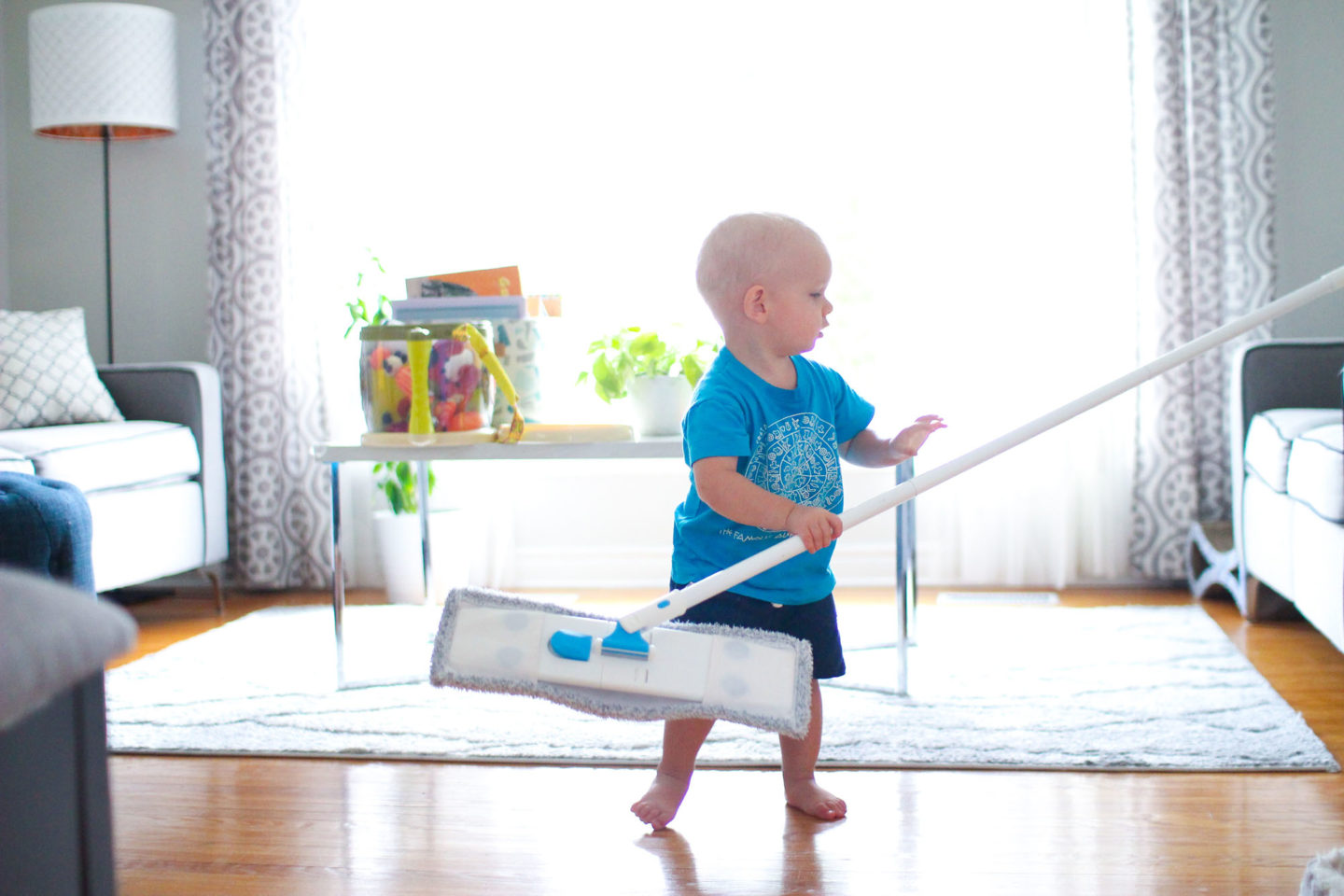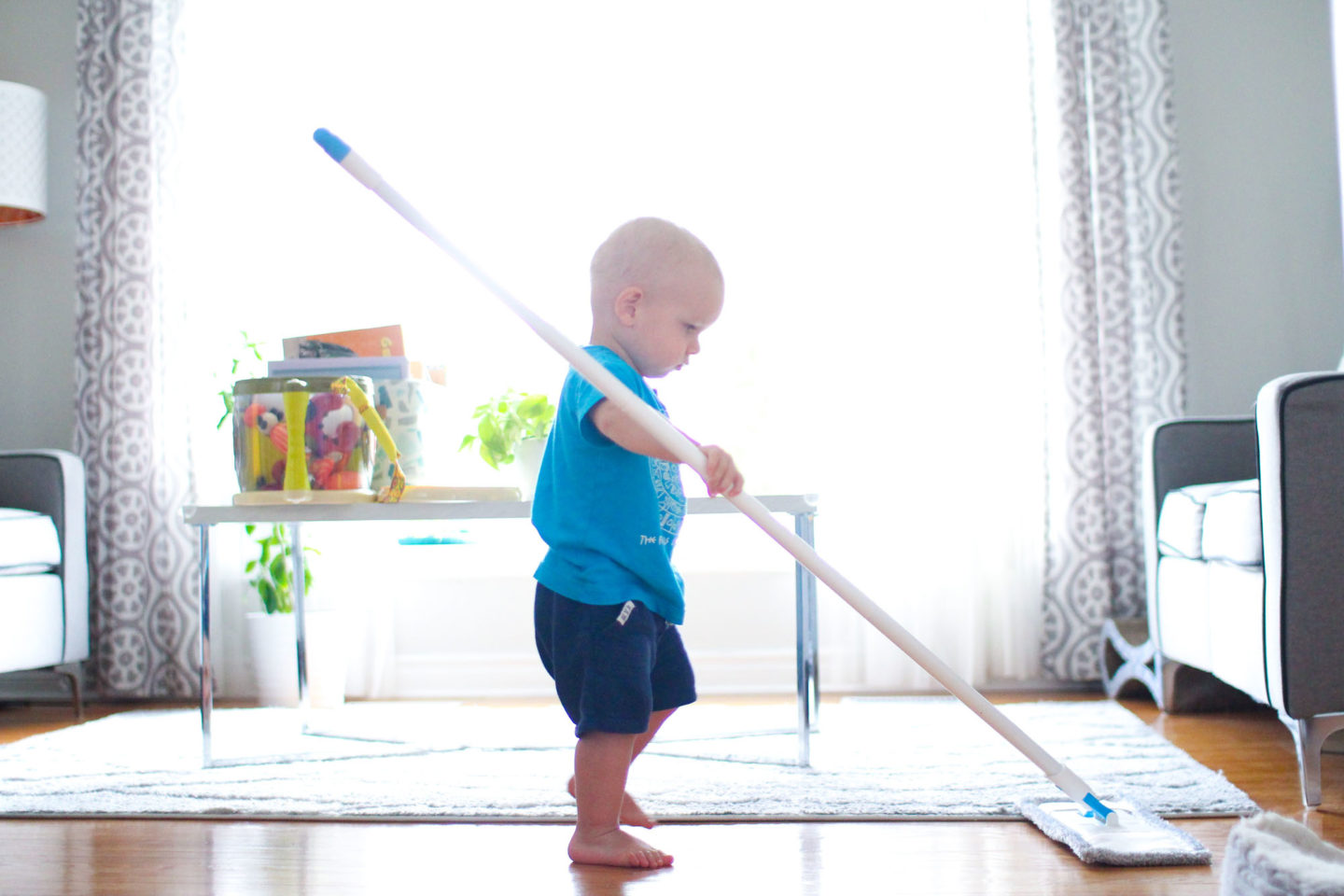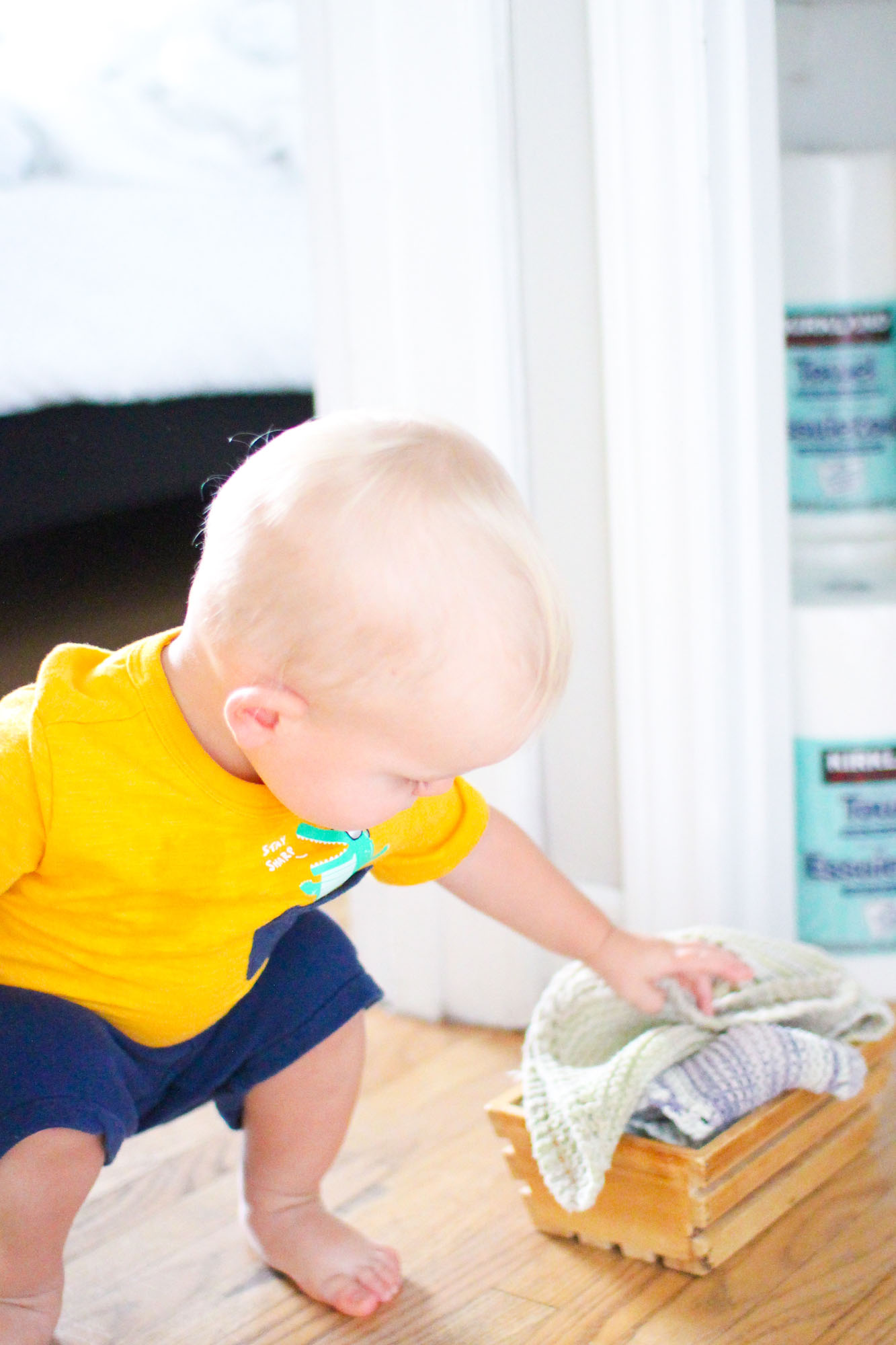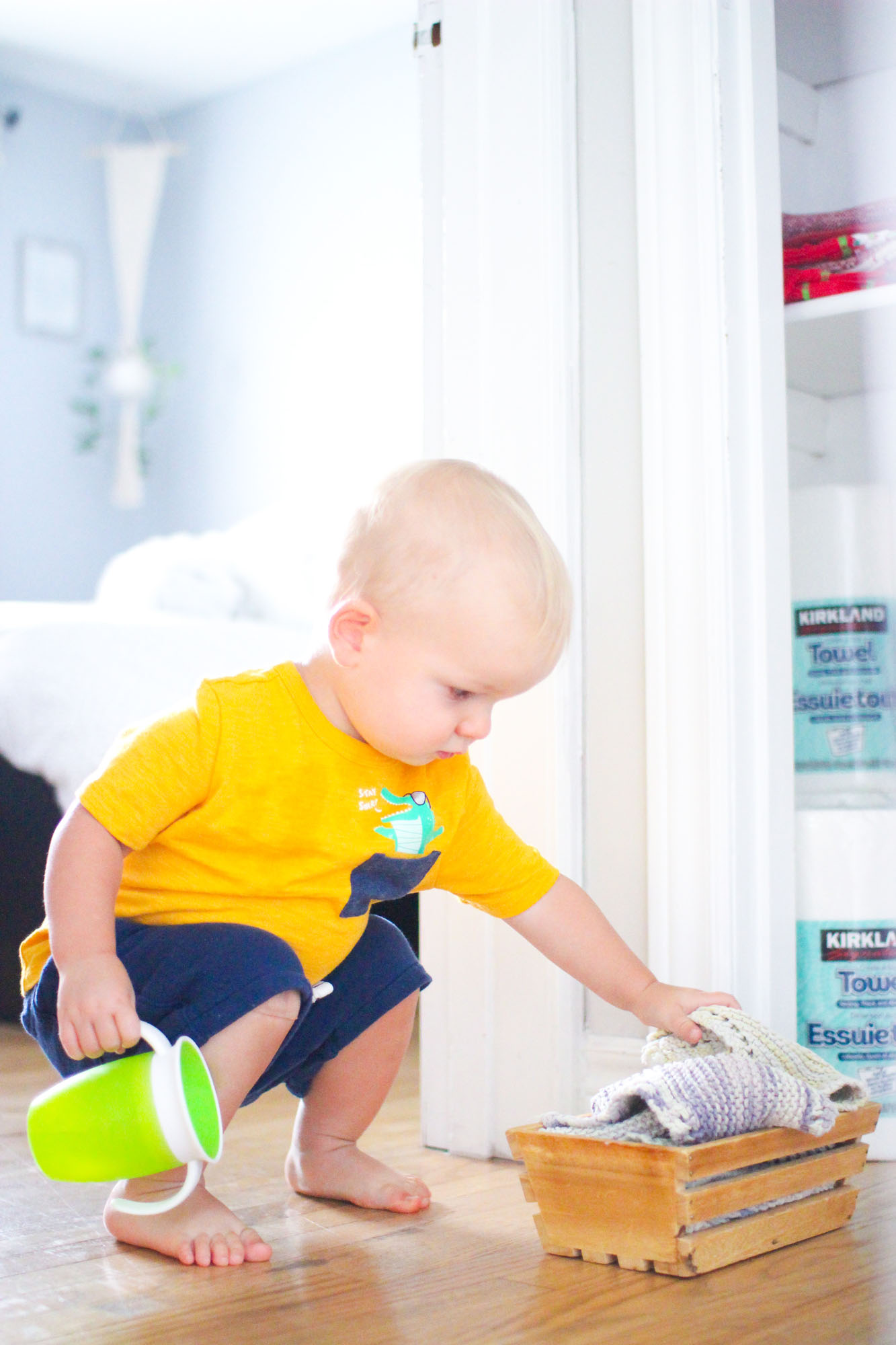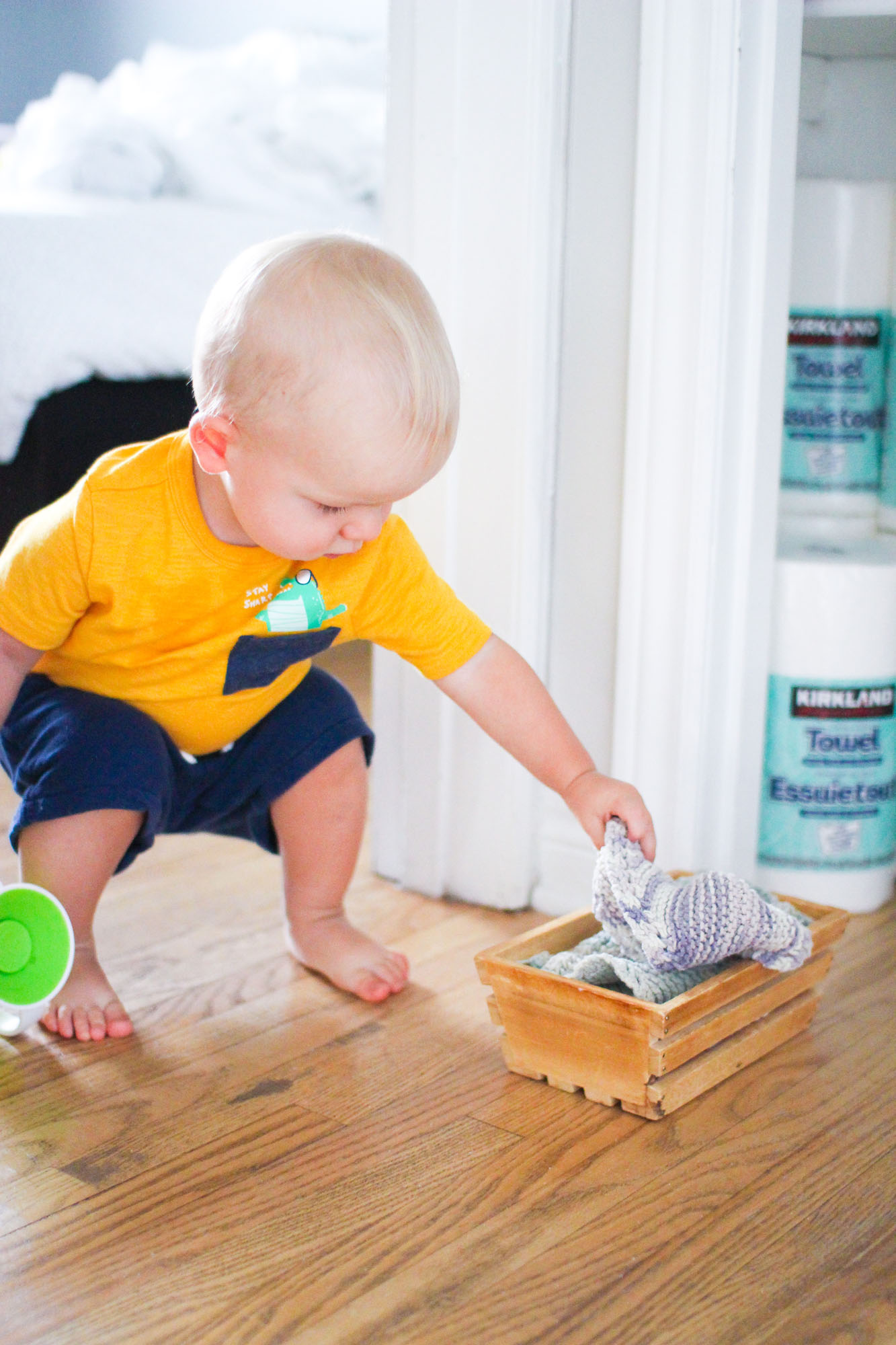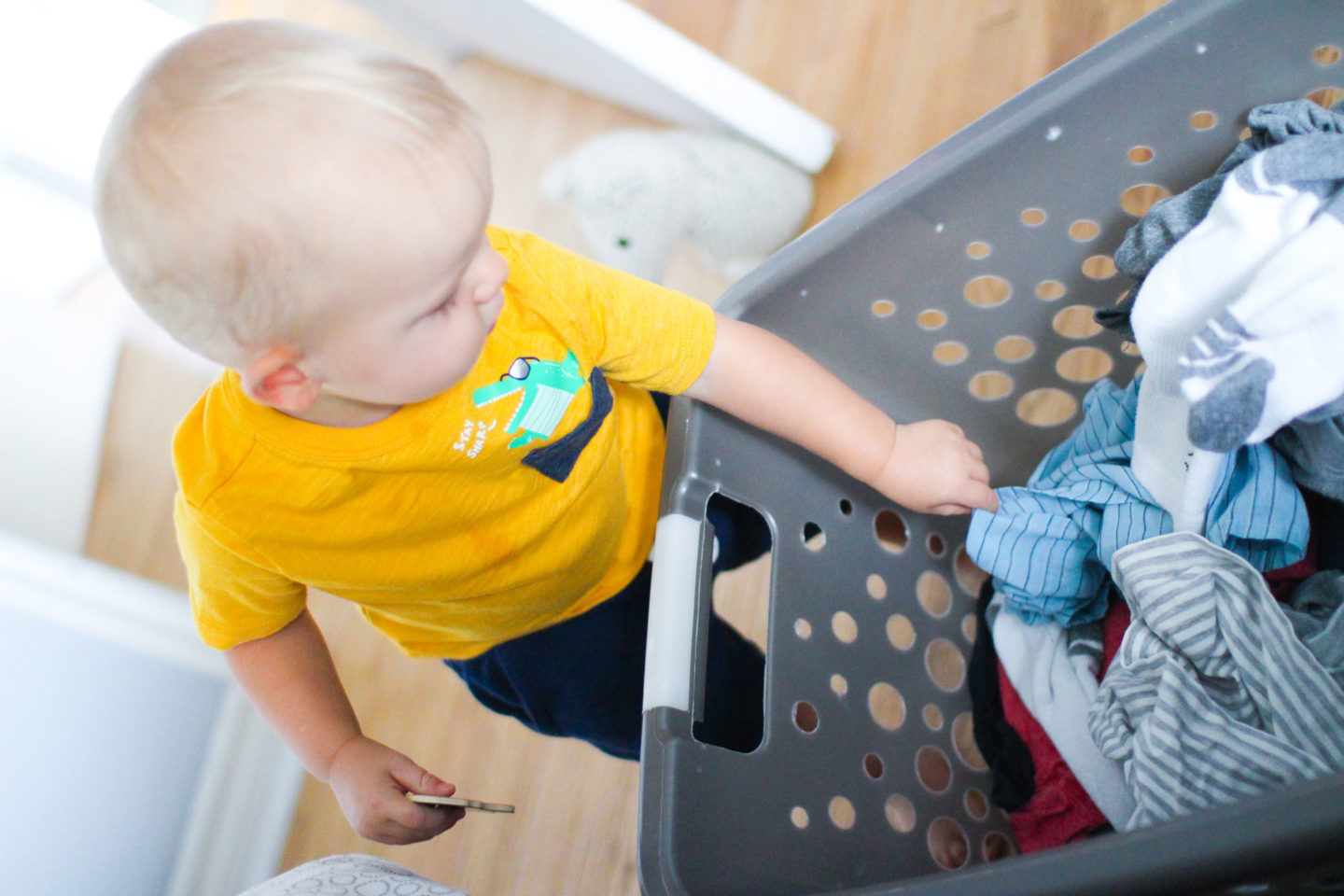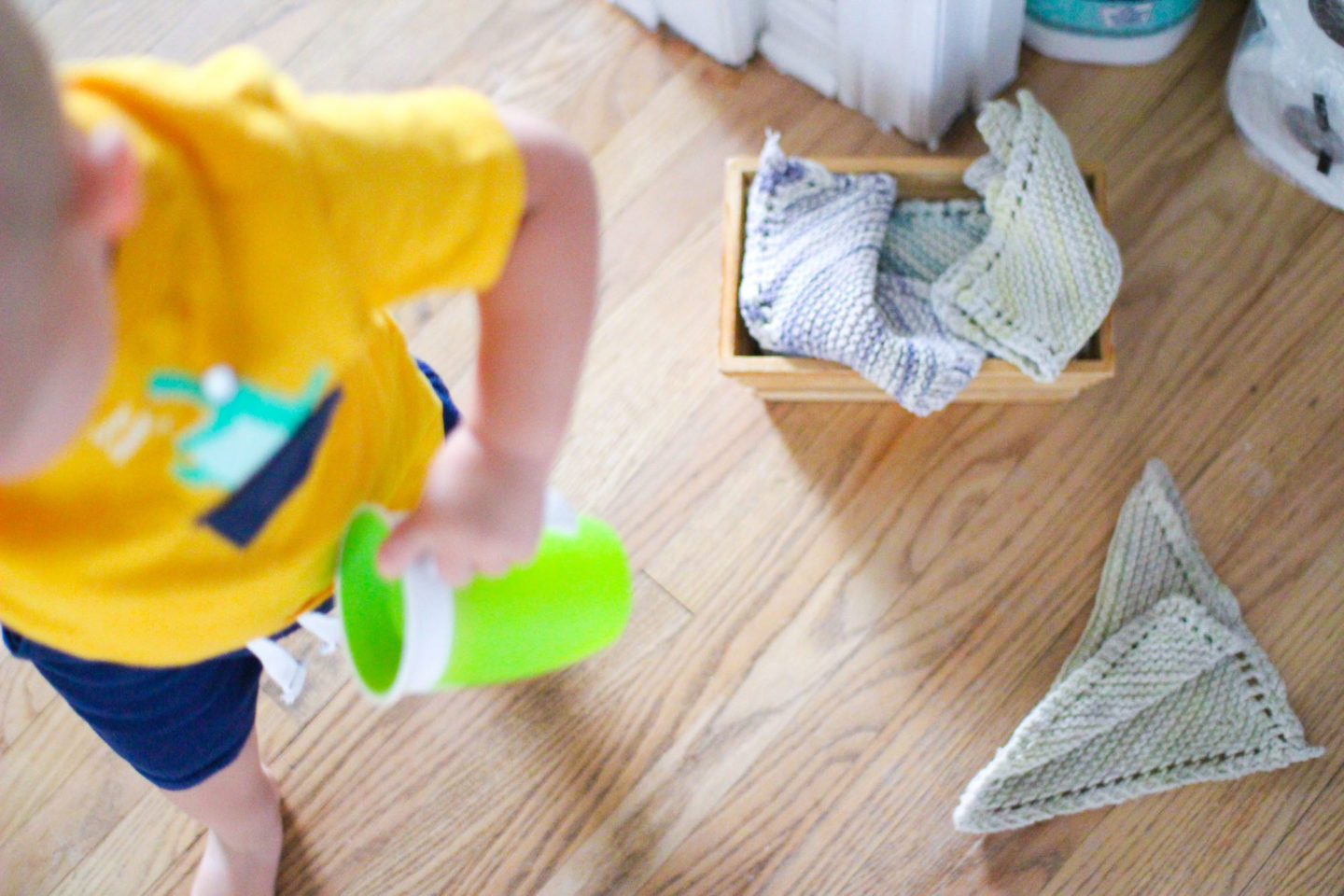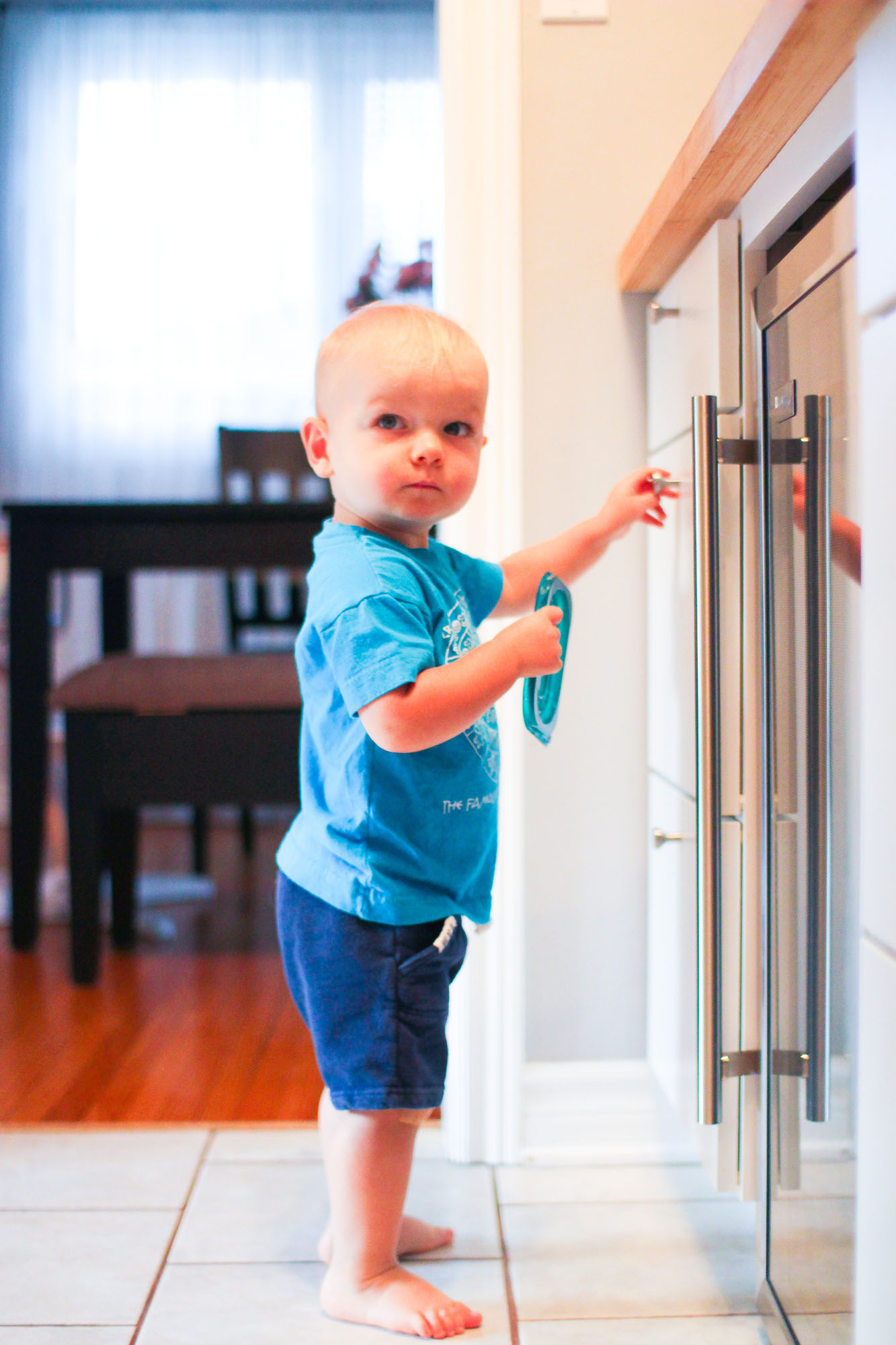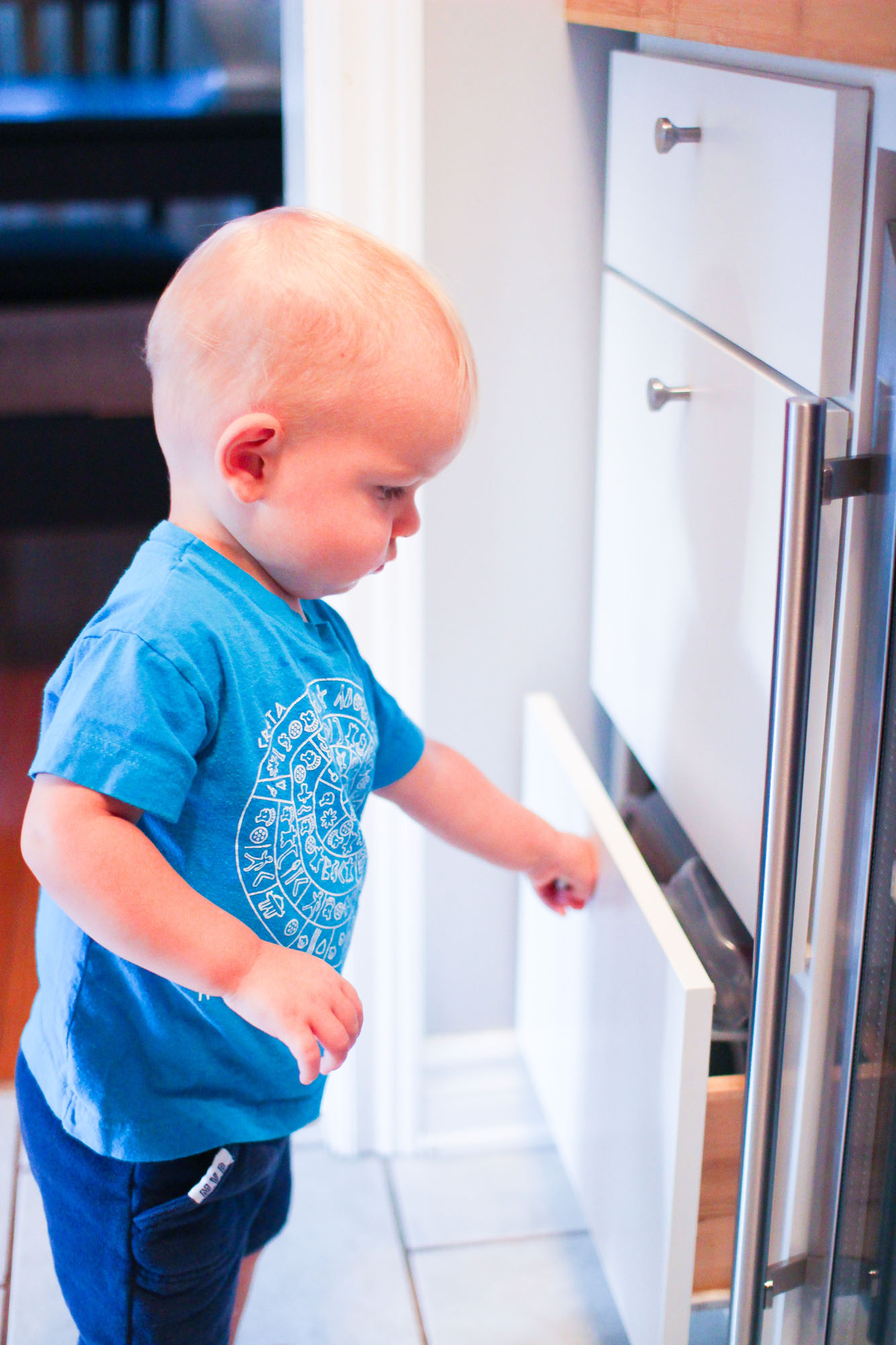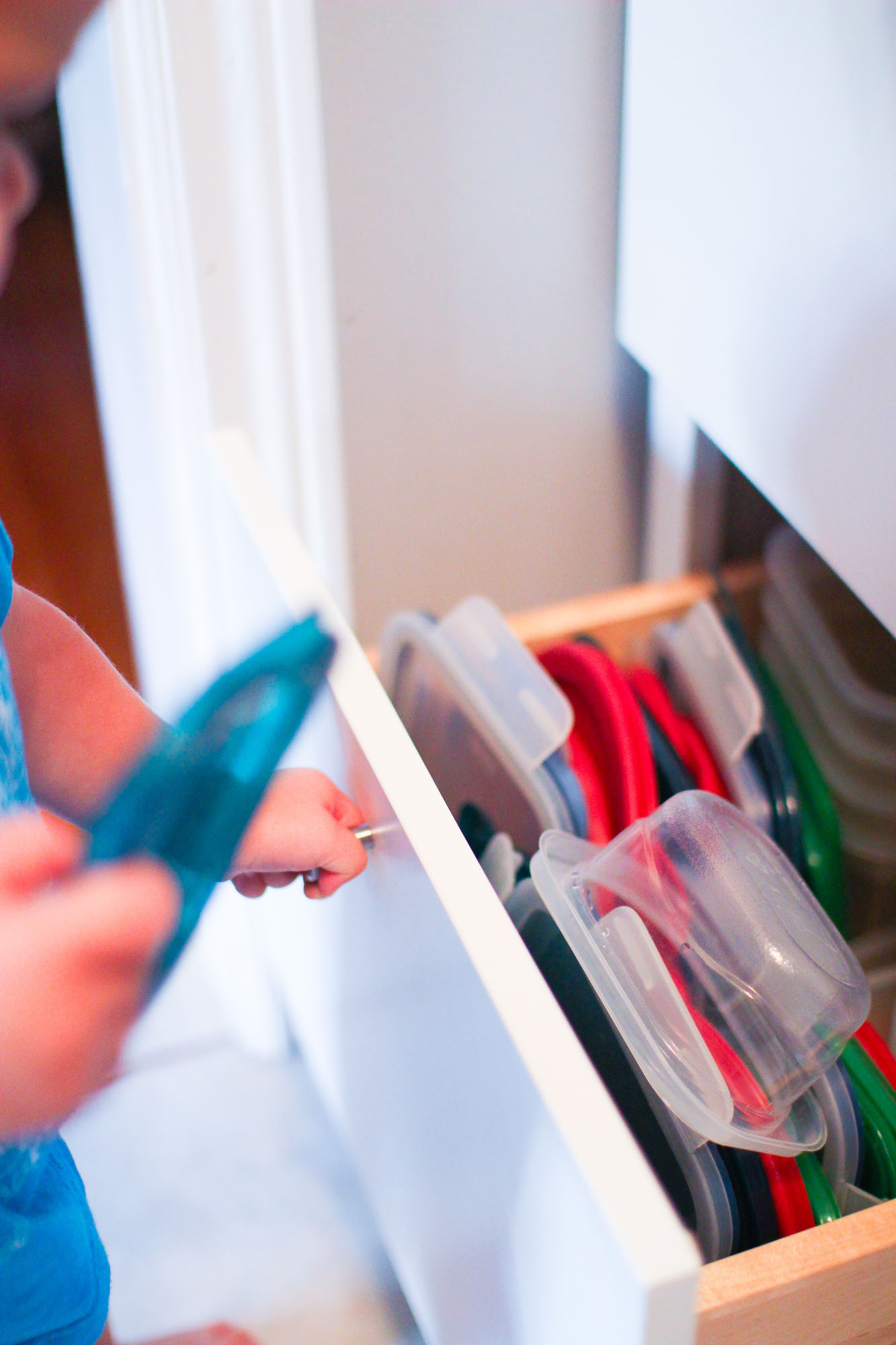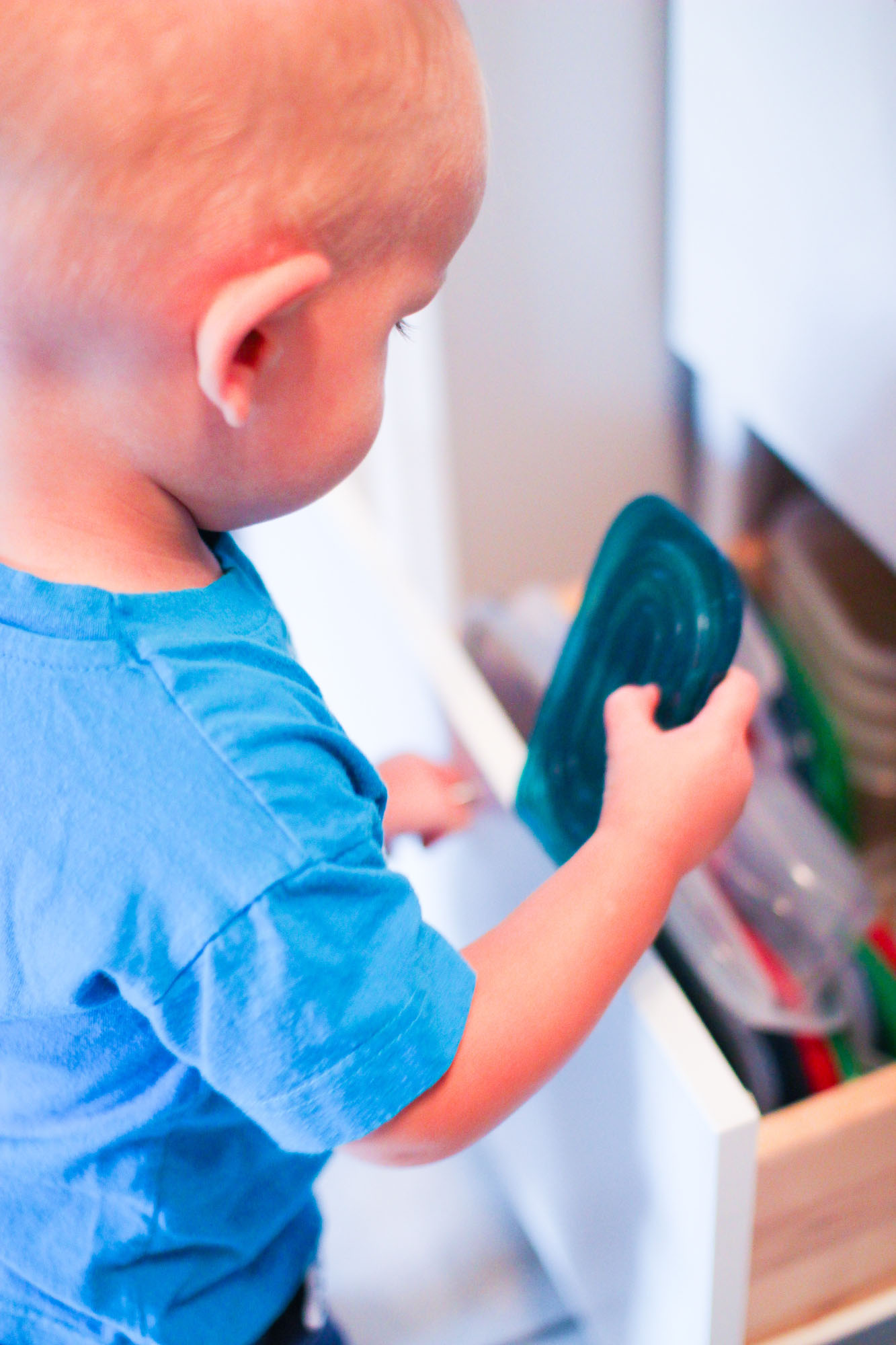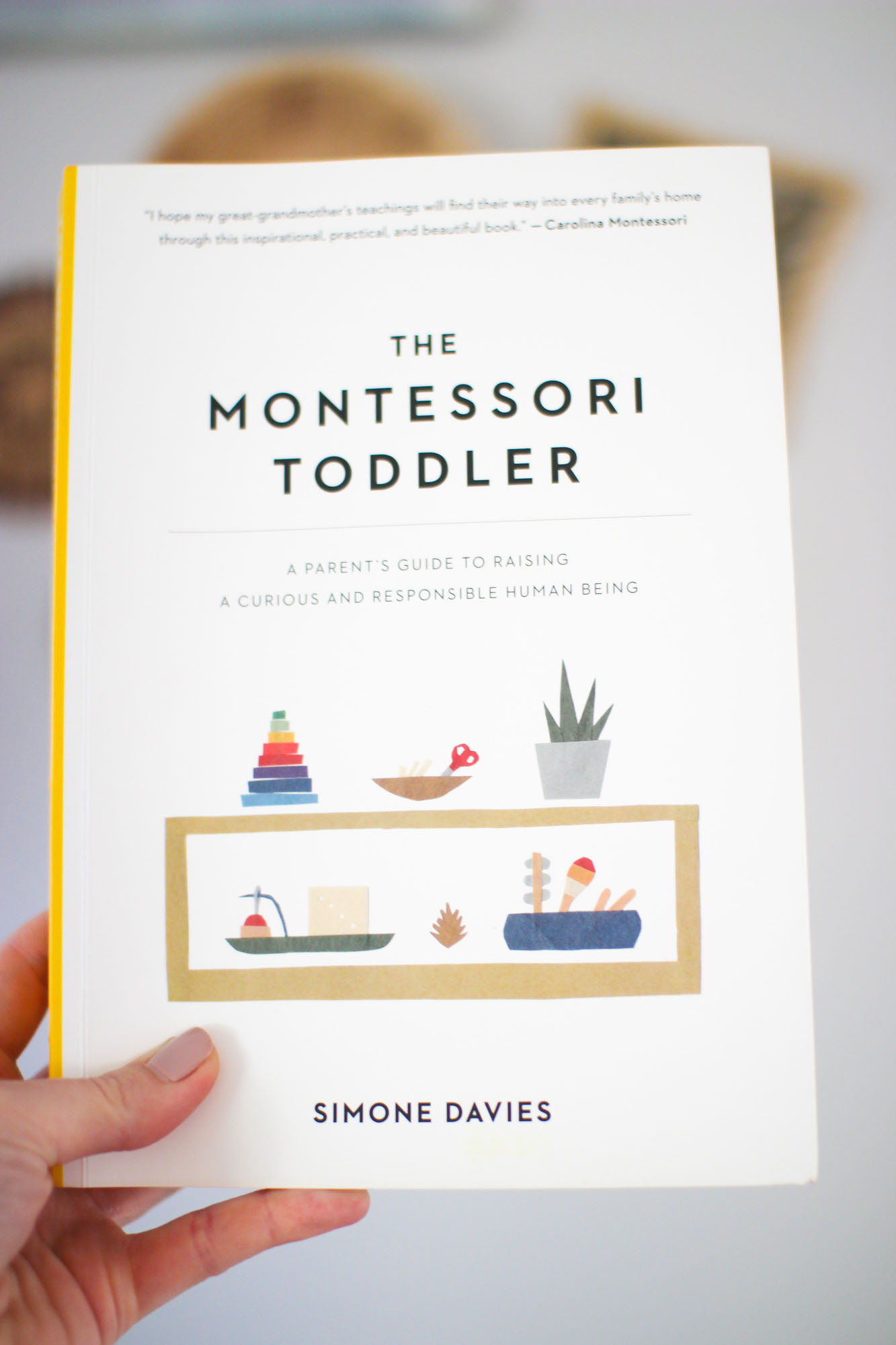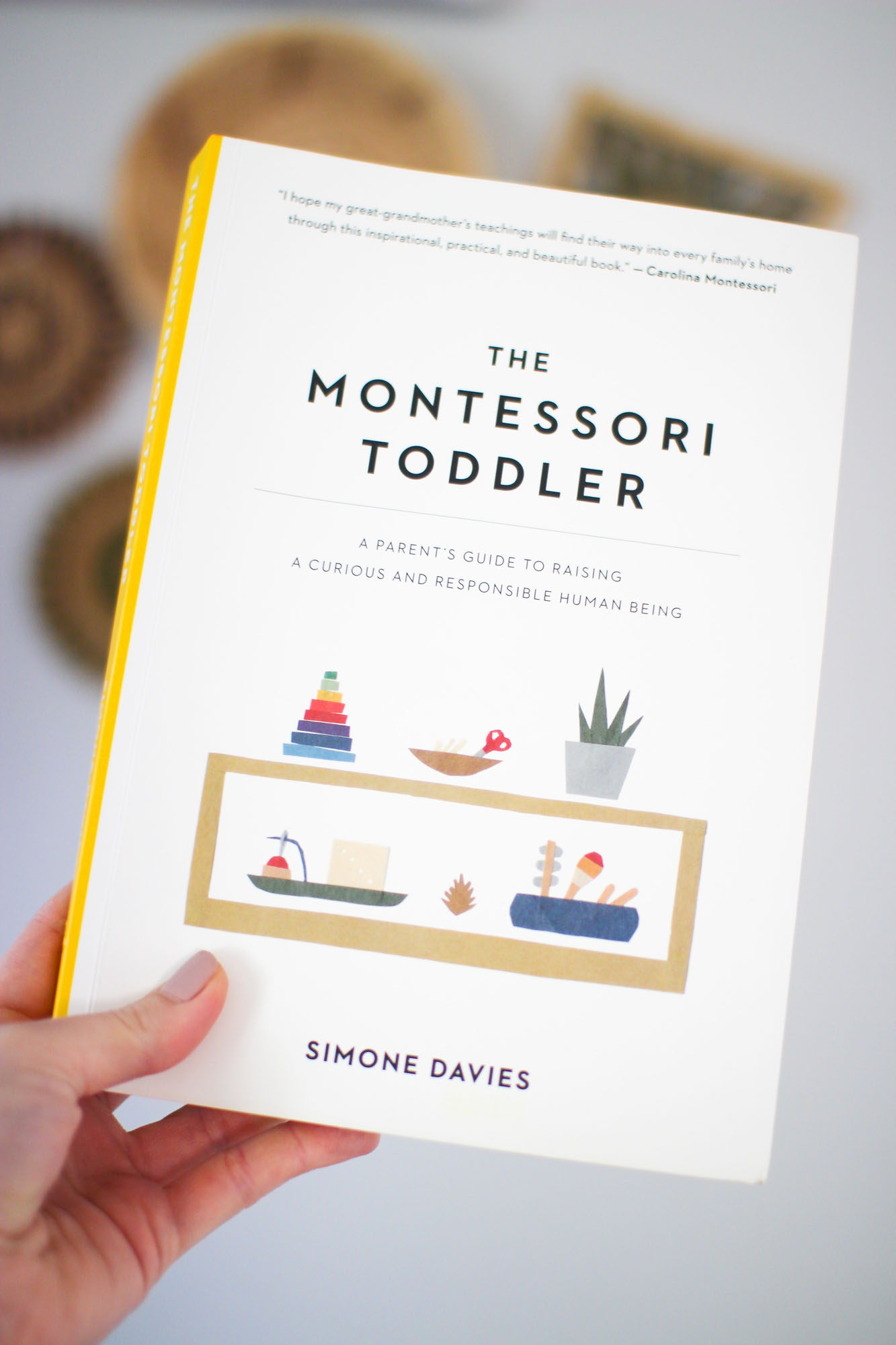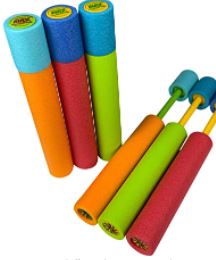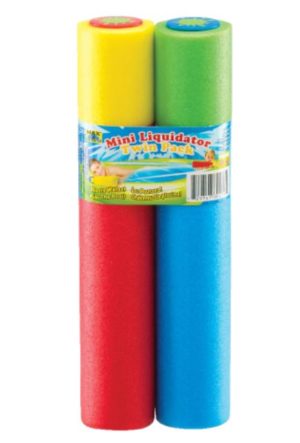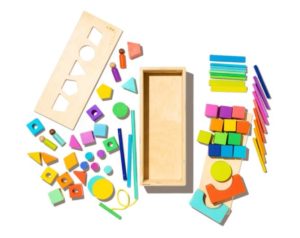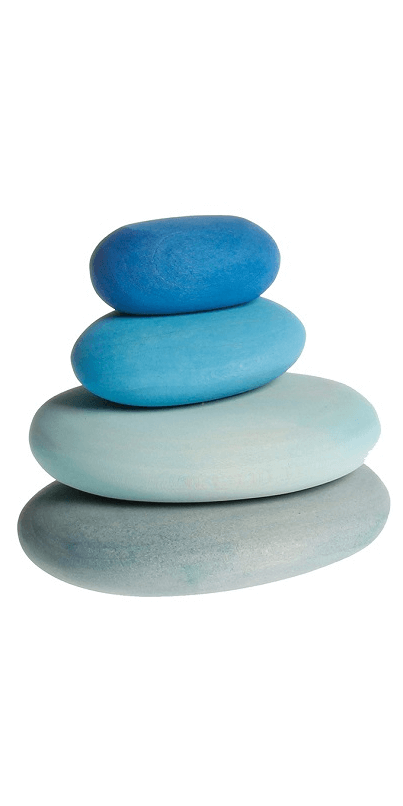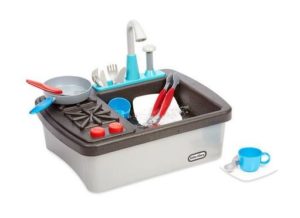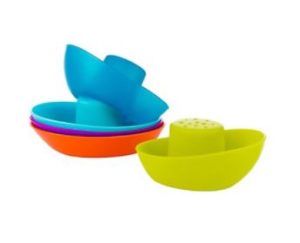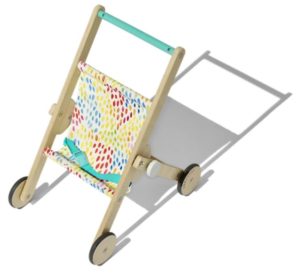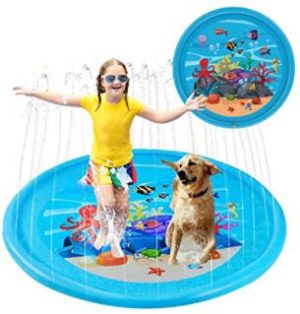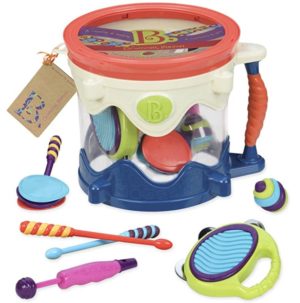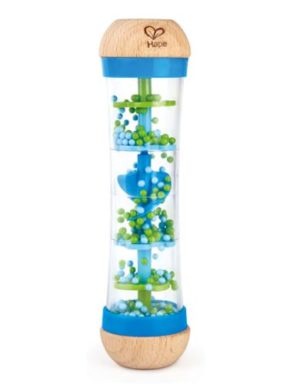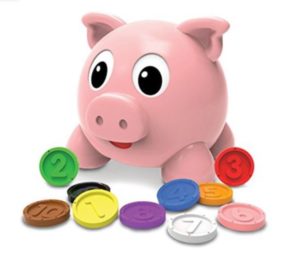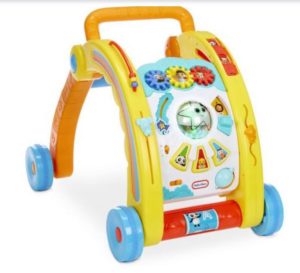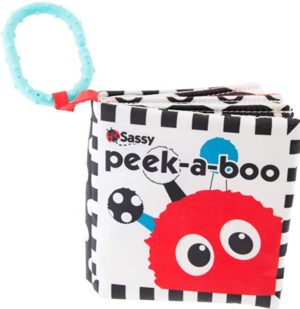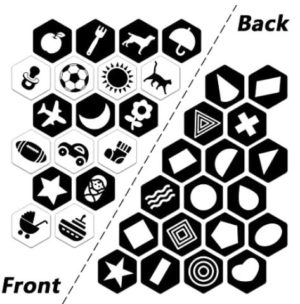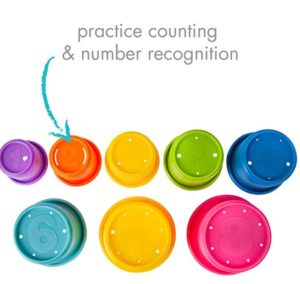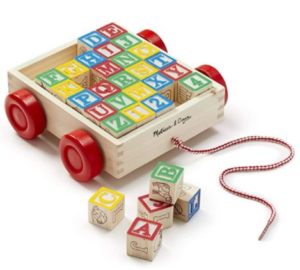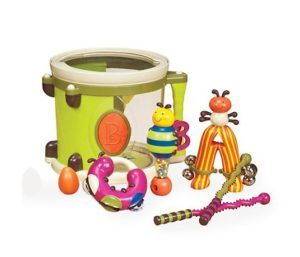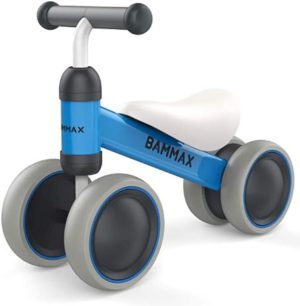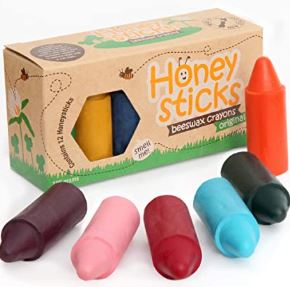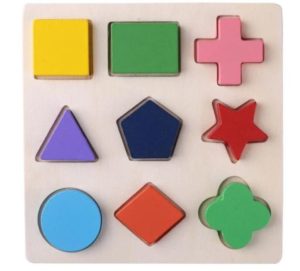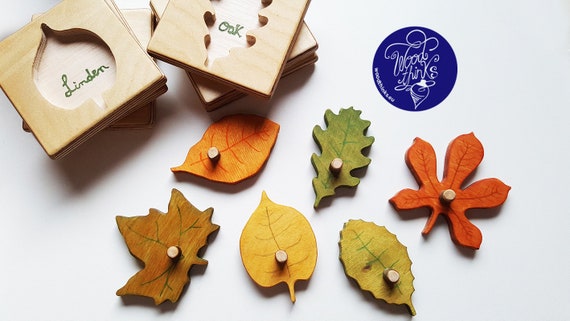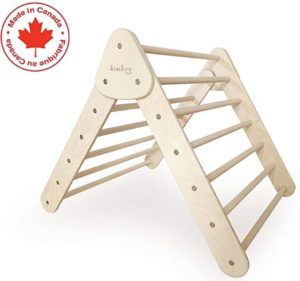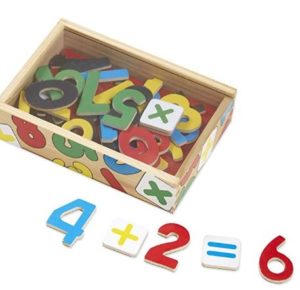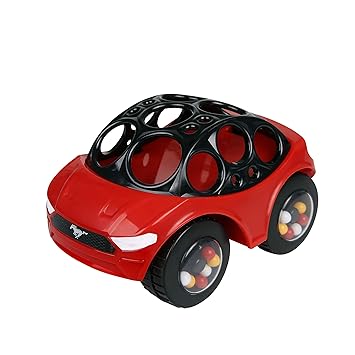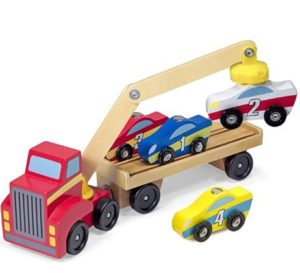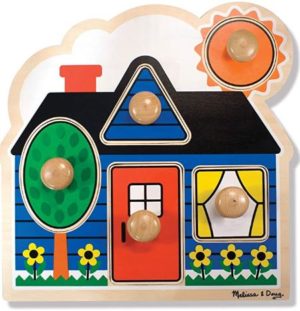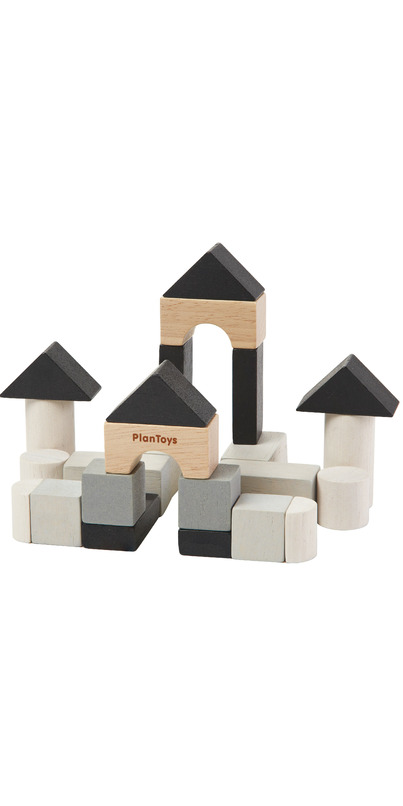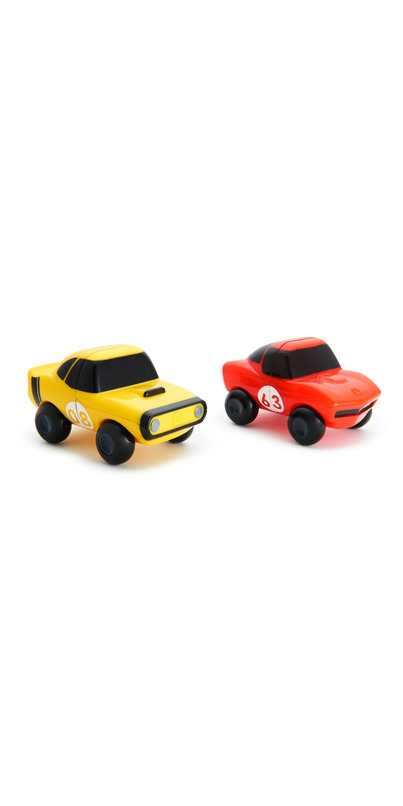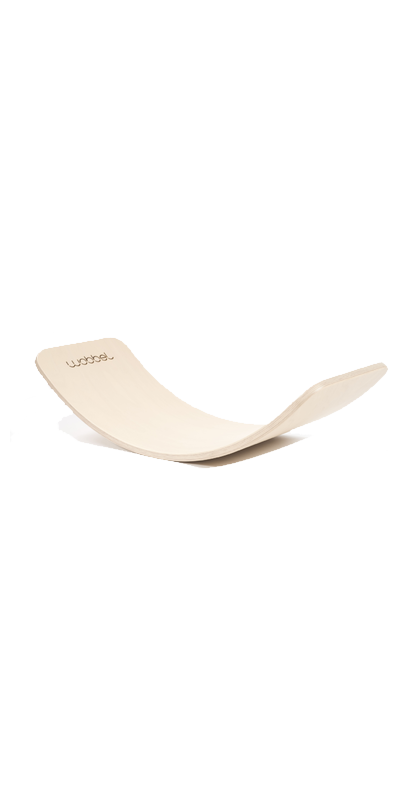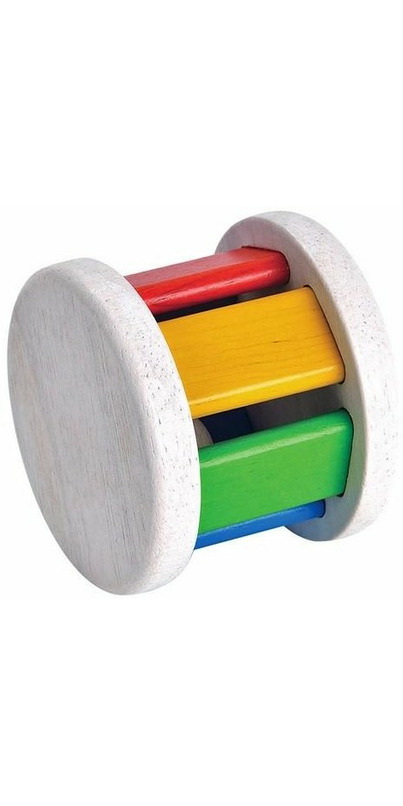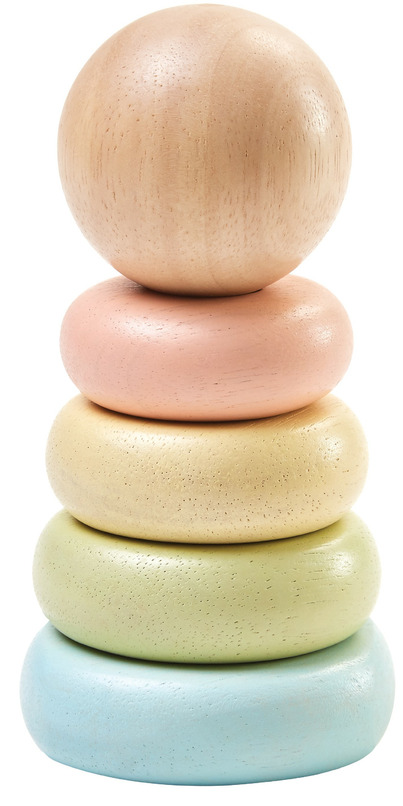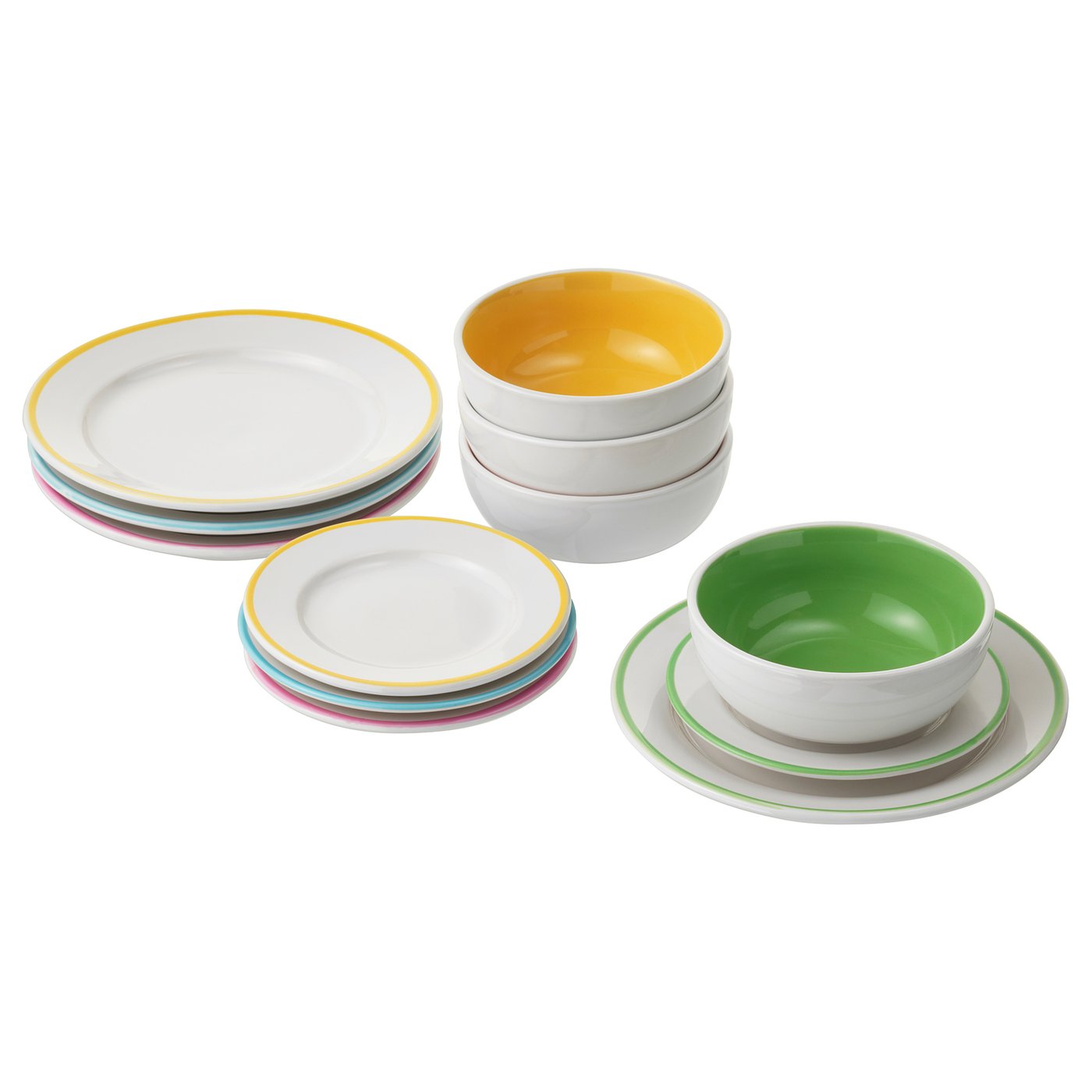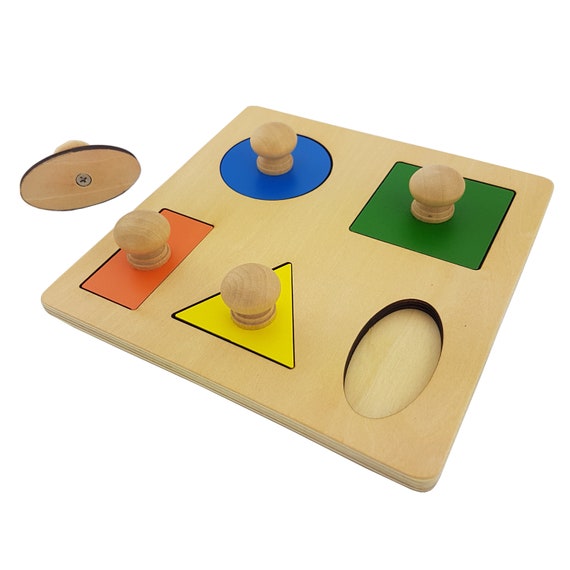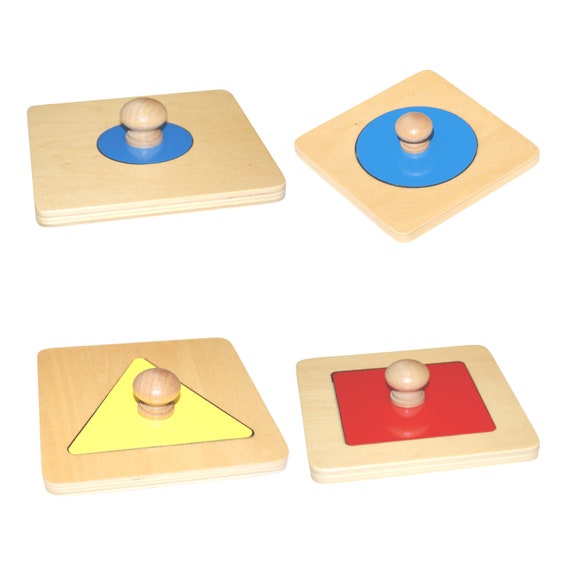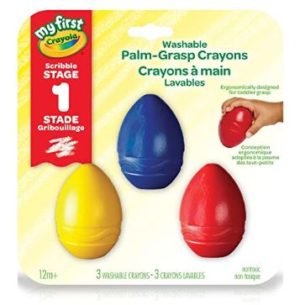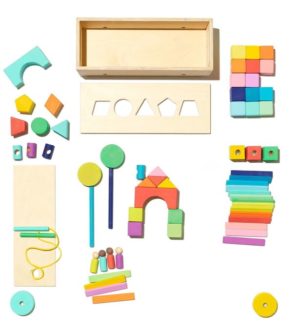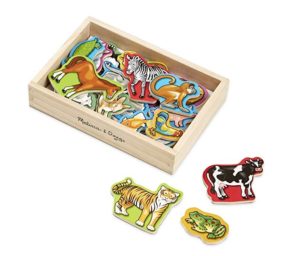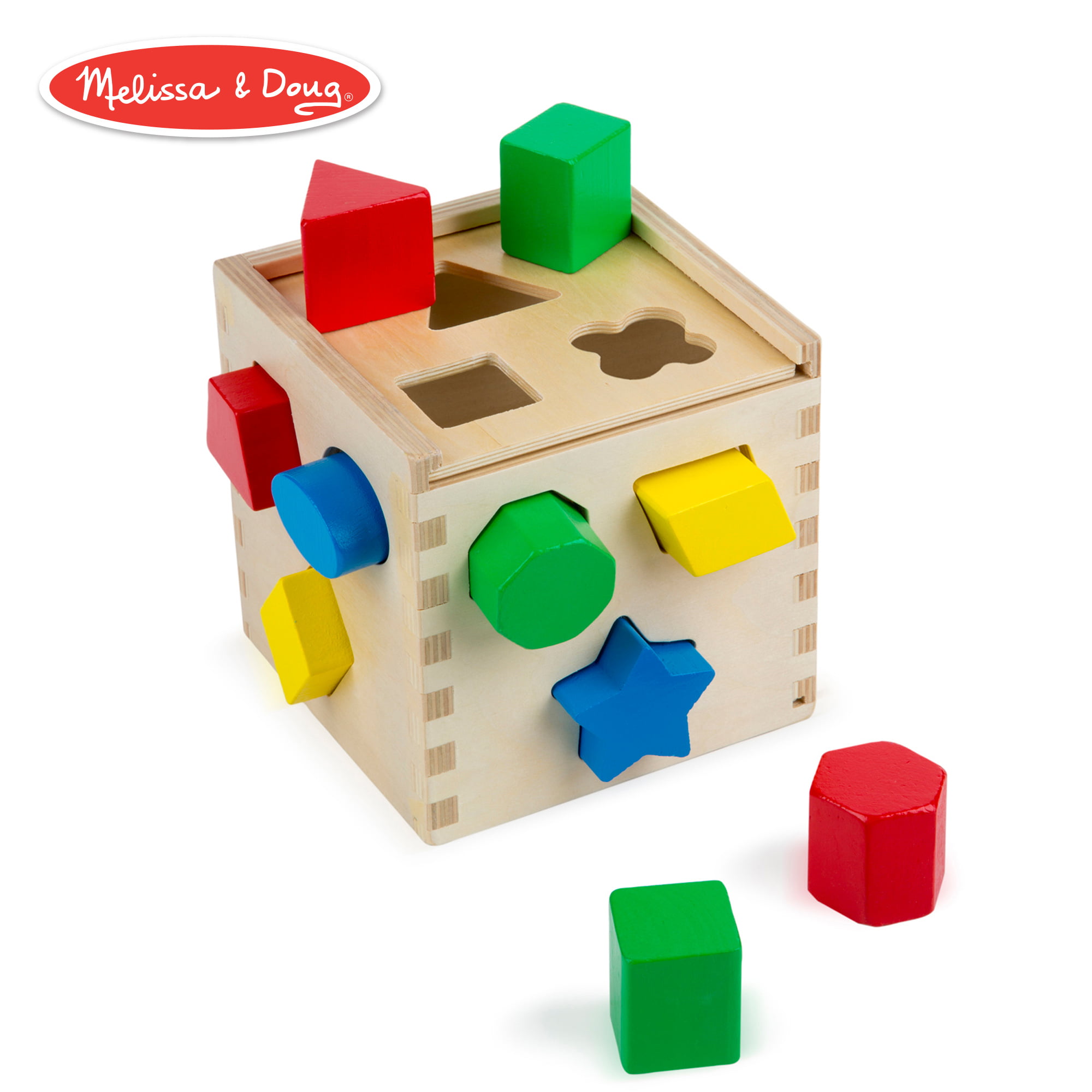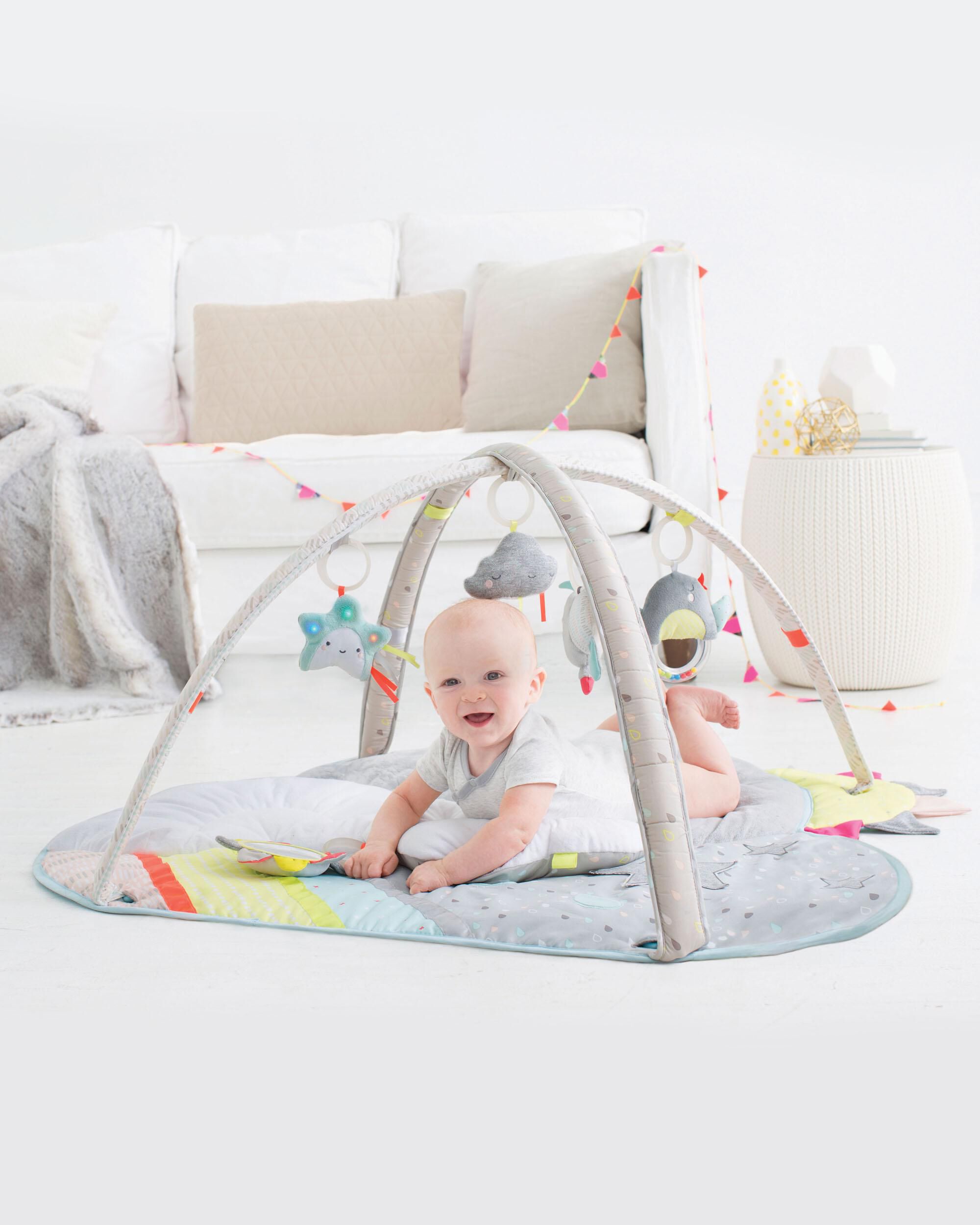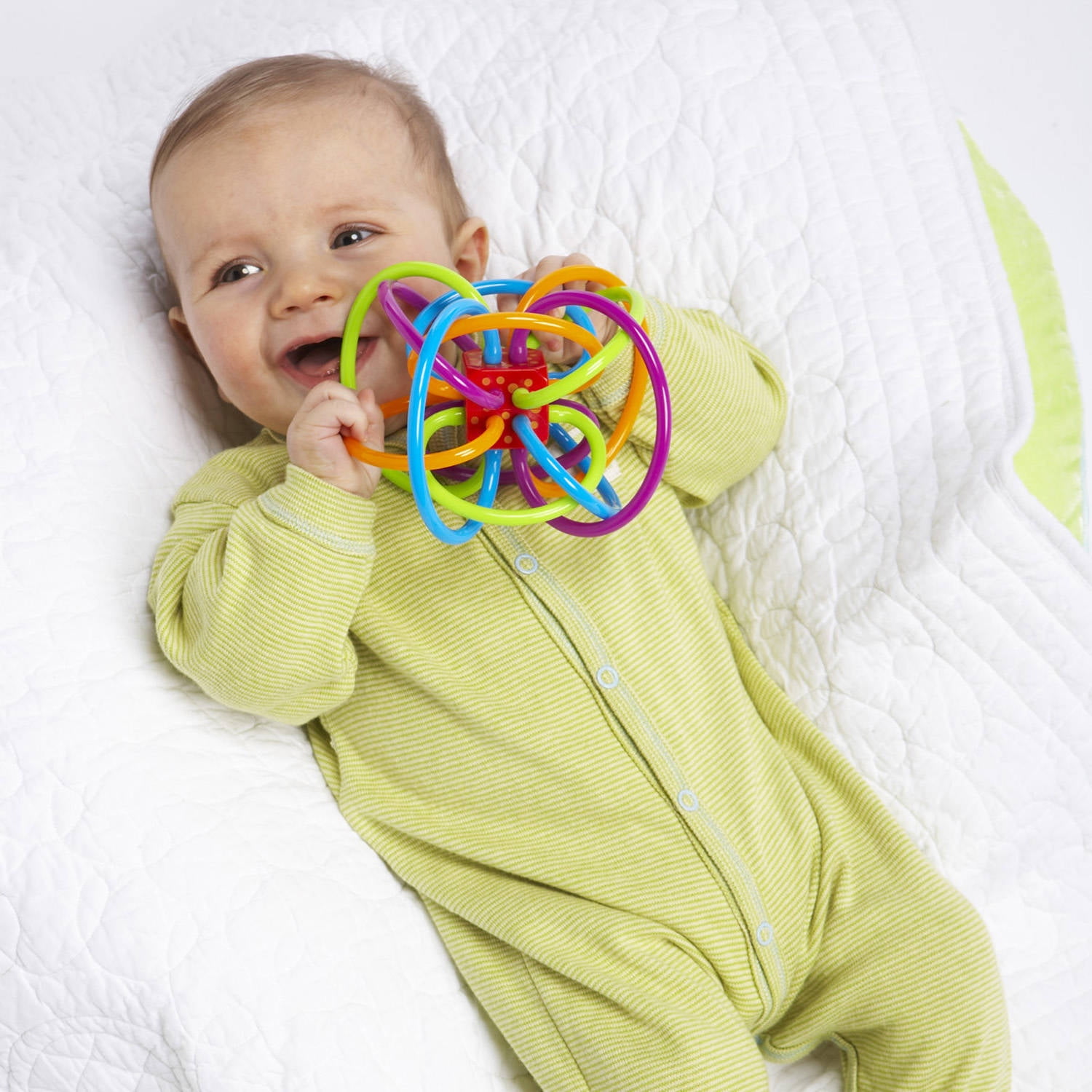As part of my three-part series on learning and toys, I had the pleasure of being gifted a copy of Simone Davies’ well-known book, The Montessori Toddler. Simone’s book is the perfect introduction to Montessori education if you’re new to exploring this alternative method to learning (just like I am).
I was so lucky to additionally be able to feature a Q&A directly from Simone via this blog post below. Thank you Simone for taking the time to share with STRUCKBLOG readers! It’s such a useful guide that can be read cover to cover or as a resource to reference when you need it.
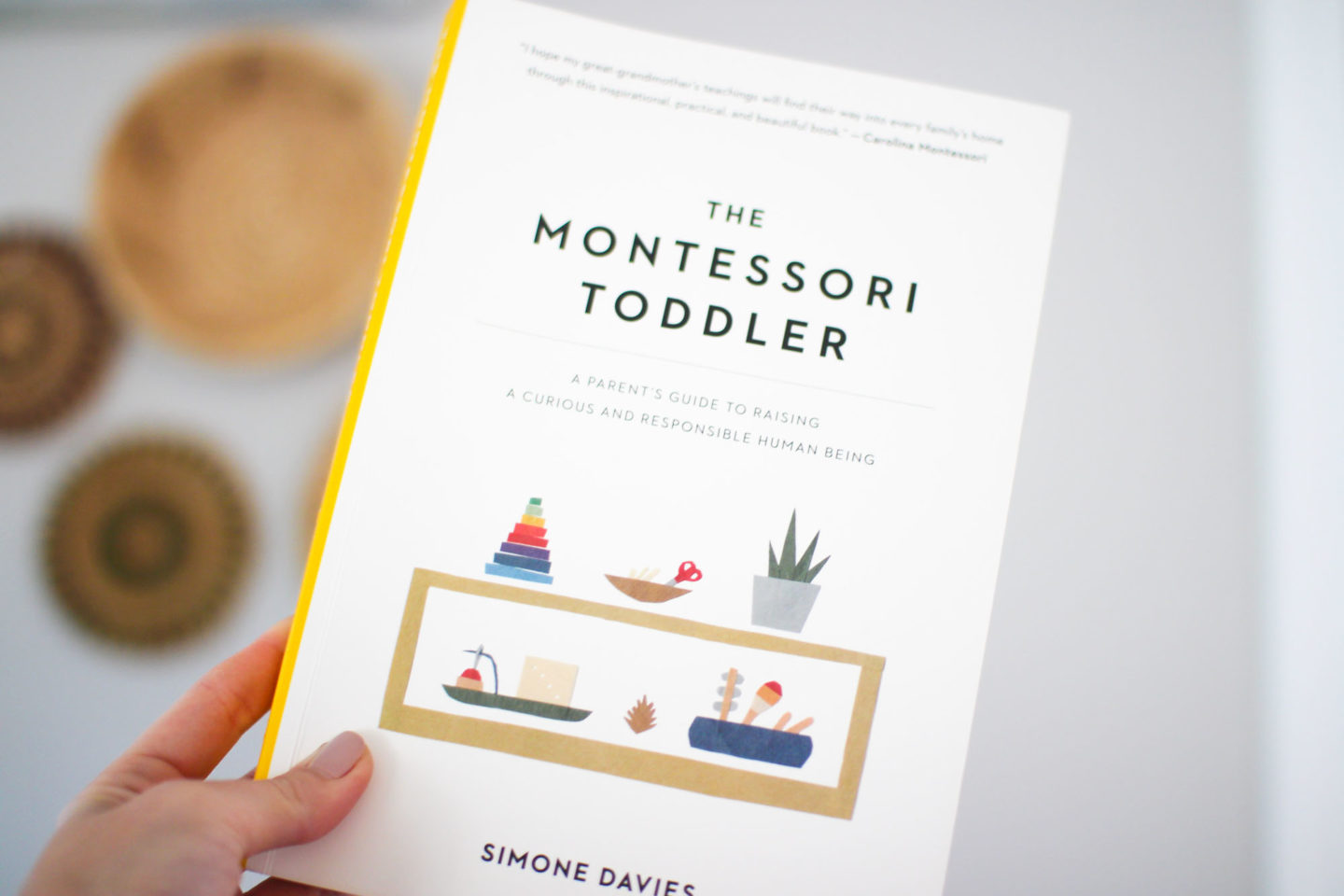
Thank you to author Simone Davies, writer of The Montessori Toddler for taking the time to answer these questions and provide us with a snapshot of her knowledge and expertise in regards to Montessori learning and education!
Did you miss the first part of my three-part series on toys and learning? Check out “Common Questions About Toys and Play” where I provide the scoop on toy rotation, explain how to come up with engaging play ideas, and provide a snapshot of how to bring Montessori learning home.
Although I have my Bachelor and Masters’s degree in Education, as a trained teacher most of my learning at the post-secondary level focused on “traditional” learning methods. However, much has changed over the years and the line between the school-like approach to learning, and “alternative” methods has blurred. Many educators like myself spend time reading materials in their spare time and taking advantage of professional development opportunities to become more familiar with alternative learning avenues so that these ideas and concepts can be applied in the classroom.
Personally, now that I’m a parent of a 19-month-old toddler, my interest stems from wanting to know how I can apply alternative learning methods such as Montessori to best support my child’s learning at home. I look for methods that are in alignment with my personal parenting beliefs and style. As it turns out, after reading The Montessori Toddler, I realized that not only do I concur with the methodology, I actually already apply many Montessori activities at home. I also felt very assured that my reasons for doing so are rooted in well-researched learning practices.
“Toddlers love to help around the home, participating in activities that have to do with looking after ourselves and our environment. These activities might be chores to us, but young children love them” – Simone Davies, The Montessori Toddler, p.39
No, I’m not strictly a Montessori mom, my toys aren’t all Montessori toys, but Montessori education can be applied wholeheartedly, or bit by bit. Once you come to understand it (via this post and perhaps Simone’s book) you’ll realize it feels pretty natural to incorporate at home.
In my opinion, when many hear the word “Montessori” (and when I see examples of it scrolling through Pinterest) different extremes come to mind. Many appear to believe Montessori is a very different approach to learning, one that is so outside of the norm that is it impossible to implement practically into daily life. Others may feel that Montessori is just wooden toys and an aesthetically pleasing space.
But Montessori is far more than that. It’s a way of thinking, a way of speaking to your child, and a way to teach them to be wonderfully self-reliant, inquisitive, and caring human beings. And that’s only scratching the surface!
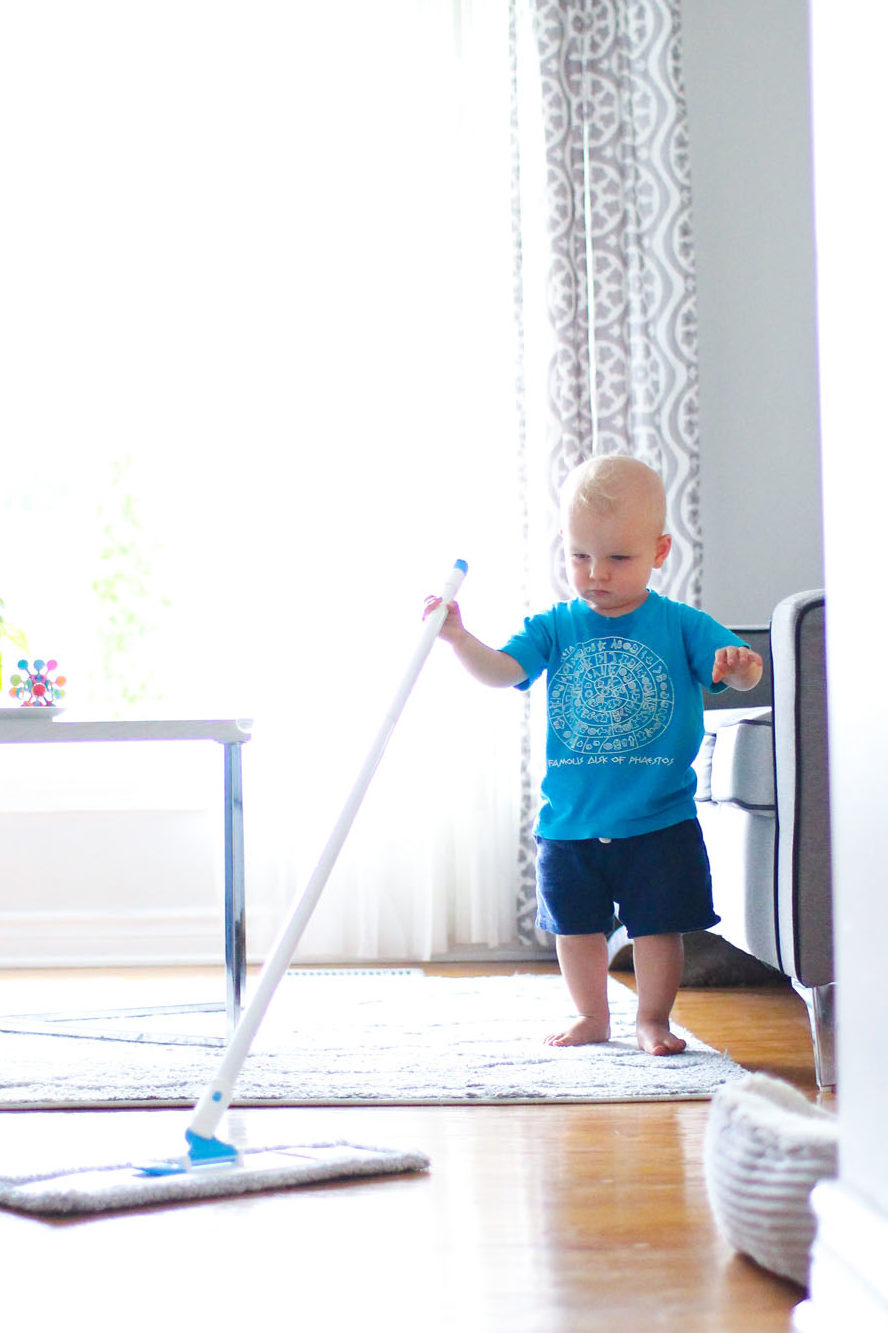
With no encouragement, Lucas grabbed the mop after I had set it down to mimic what he had observed me doing. This signals to me that I should acquire a child-sized mop for him so he can help to take care of our home. As an active child, this is an activity that also encourages Lucas to behave in a calm fashion, maintaining focus and teaching him independence.
I believe one would be hard-pressed to find a parent who wouldn’t agree that teaching their child to be a kind, independent, and curious individual is of paramount importance.
Simone’s book, The Montessori Toddler, makes learning about Montessori education simple. In my time studying education, I’ve read countless dry texts that are difficult to engage with and absorb. But Simone’s book makes it easy for the busy parent to understand and immediately apply. Even if you don’t have time to read the entire book, you can easily flip to a section of urgent interest and quickly come to discern how you can apply Montessori thinking to any given parenting and learning situation.
Below you’ll find Simone Davies’ answers to common questions about Montessori education, as well as why she wrote her book, why she loves toddlers, and how the Montessori method informed her as a parent of two.
What is Montessori?
“Montessori education is an alternative education where the child learns on their own individual timeline. Looking around a Montessori classroom, there will be children working on different subjects, some working alone, some in pairs or small groups at tables or stretched out on mats on the floor.
The classrooms are mixed-age where older children can help younger children and younger children can learn from watching older children. There is a rich curriculum in all learning areas using tactile materials that are beautifully displayed on the shelf. And the teacher acts as a guide, giving children lessons individually or in small groups where they are up to.”
How is Montessori different from traditional education and what are the benefits?
“In traditional education, the teacher stands at the front of the classroom and tells the children what they need to learn today – a top-down approach. In Montessori education, the teacher moves around the classroom assisting the children who are working in various areas of the classroom. It is the children who decide what they would like to work on and can follow their own rhythm and interests. The teacher can help them with something they avoid or find difficult, or if they are ready for the next lesson in a learning area.
Instead of passively learning, in Montessori education, the children are active participants in their education. They learn in a concrete, hands-on way. The children are remarkably capable and self-driven. And they also learn soft skills about looking after others in the class, caring for their environment, looking after themselves, and solving problems. They learn how to work things out for themselves – a creative skill they will need for life.”
“The children are remarkably capable and self-driven. And they also learn soft skills about looking after others in the class, caring for their environment, looking after themselves, and solving problems. They learn how to work things out for themselves – a creative skill they will need for life.”
How is the Montessori method different from other parenting methods?
“I like to think of parenting methods along a spectrum from authoritarian methods of parenting (where the parent tells the child everything they need to do) to laissez-faire parenting (where the child is allowed to do anything they like).
A Montessori approach to parenting falls somewhere in the middle of this spectrum – there is freedom for the child to explore and make discoveries for themselves within limits so that they learn to also grow up as a member of society taking responsibility for their actions. It involves mutual respect between the child and parent as in positive discipline or gentle parenting, but goes further to help parents see how their child learns, how they can set up their home for the child to be part of the family, and how the parent can also look after themselves so they can bring the joy back to parenting.”
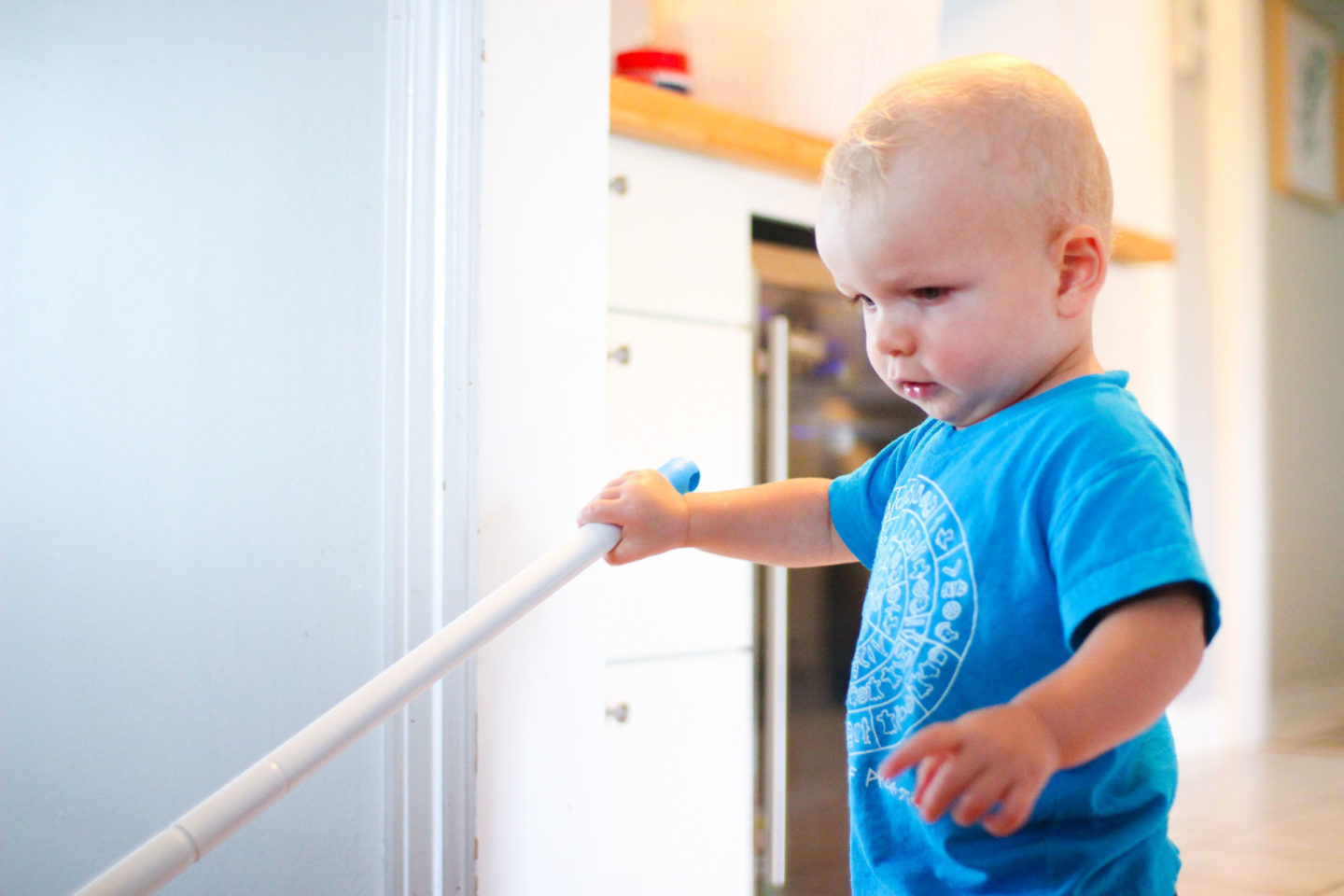
You have over 15 years of experience as a Montessori educator. How did you become involved and what sparked you to want to become a teacher?
“I became interested in Montessori education when my children were born. I was looking for a school for them and, as an idealist, wanted them to love learning, not just to pass tests. When I walked into a Montessori classroom for the first time, I fell in love. The environment was so beautiful and attractive, the teachers were so kind and respectful to the children, and I knew this was where I wanted my children to go to school. We then started attending a Montessori playgroup and it wasn’t long before I began training to become a Montessori teacher myself (with the Association Montessori Internationale).”
What’s the first activity you recommend a parent do as an introduction to the Montessori method?
“There are many ways to start to include Montessori in the home. For me, I started with setting up Montessori activities for my children and noticed how engaged they were. Then I moved on to incorporating Montessori principles in every area of my home so that they could be involved in everything from hanging up their own coat when we arrived home to helping with meal preparation. The final piece that took a lot of practice for me was learning to slow down to their pace most of the time, seeing from their perspective and finding ways to work with them to get their cooperation, to learn to observe my children as their unique selves (not comparing them to others or my own childhood) and to parent in a kind and clear way.”
“Children as young as 1 year old take delight in helping to bring laundry to the hamper, being involved in meal preparation and setting the table, and learning to take care of their things. And they live in the present moment – they will spot the weeds growing up between some pavers or hear a fire engine blocks away. They show how simple life can be.”
Most people find toddlerhood to be the most difficult age – they call it “the terrible twos” for a reason! – but you say that toddlers are your favorite age group. Why?
“Yes, whilst many people see their behaviour as frustrating, I love being with toddlers. They are so authentic – they have no judgement about anything around them. They learn so easily – Dr.Montessori referred to the absorbent mind to describe how they absorb language, culture, attitudes, and everything around them with little effort like a sponge. Their moods change easily, so once they may have had a tantrum and calmed down, they easily go back to being their delightful selves (unlike adults who can stay in a bad mood all day). They are so capable and love to be involved in what we are doing – when their spaces are set up for them and we slow down, children as young as 1 year old take delight in helping to bring laundry to the hamper, being involved in meal preparation and setting the table, and learning to take care of their things. And they live in the present moment – they will spot the weeds growing up between some pavers or hear a fire engine blocks away. They show how simple life can be.”
You claim that toddlers are misunderstood. Why and what are some crucial things that we all need to learn about them?
“Adults get frustrated that the toddler won’t sit still, keep saying “no”, or won’t listen.
What we need to learn is that toddlers need to move and want to explore the world around them.
They are also learning to be independent from their parents, so learning to say “no” is a way of trying out more autonomy.
Toddlers also are still developing their impulse control (their pre-frontal cortex will still be developing until the into their early 20’s), meaning that it is the adult’s job to keep everyone safe in a kind and clear way.
We also think that toddlers are giving us a hard time. Really in these moments they are having a hard time and need us to be on their team to help them calm down and once they are calm to gently guide them to make amends if needed.”
Here’s an example of practical life skills I try to teach Lucas at home, applying the Montessori method in daily life. Instead of folding laundry during nap or while he’s busy elsewhere, I involve him. With the addition of this repurposed wooden basket, I was able to teach him by example to bring dishcloths from the laundry basket here. Of course, he plays with them and explores, and I don’t expect him to fold them perfectly, but I know that one day he will be far more capable of doing this himself thanks for these experiences.
Threatening and bribing are common approaches that parents of toddlers resort to. You say there is another way?
“In the Montessori approach, we see that threatening, bribing, and punishments are all extrinsic motivation – it is the adult that needs to do something to get the child to cooperate. A child may cooperate so they don’t get in trouble or so that they receive a reward. However, they are not learning to act for themselves and develop self-discipline.
Instead of threats and bribes, another way to get cooperation is to find ways to work with them in a respectful way. For example, when they need to get dressed, we can:
- give them (limited) choices about what they’d like to wear so they feel involved
- have a checklist hanging up that we’ve made together of the things that need to be done to leave the house
- set up our home so they can find everything they need at the ready
- learn to talk in a way that helps us be heard (for example, instead of nagging, using fewer words, or using actions instead of words)
- allow time for them to try to dress themselves, and
- break things down into small parts to teach them skills for them to be successful in this.
Over time they are then capable of getting dressed all by themselves, without having used or needing to use threats or bribes.”
Why did you decide to write a book for toddlers using the Montessori principles?
“I have enormous empathy for toddlers and find it easy to see the world from their perspective. So I wanted to be able to help parents understand them better and show parents how to live with toddlers in a calm and joyful way. The Montessori approach applies just as well at home as at school, where we can use the same principles to be respectful to our child, to encourage curiosity in our child, and to navigate tantrums and big feelings in a supportive way.”
“We can set up the spaces so the children are set up to be more capable and independent, encourage children to be curious about the world around them (and) find ways to nurture cooperation rather than using bribes, threats, and punishments”
How does a Montessori education impact the child’s life at home?
“When we apply Montessori principles in the home:
- we can set up the spaces so the children are set up to be more capable and independent
- we encourage children to be curious about the world around them
- we spend a lot of time in nature and the outdoors
- we encourage our child to learn about the world around them with all their senses
- they feel respected and valued in the home
- we find ways to nurture cooperation rather than using bribes, threats, and punishments”
What are the first steps you take when helping parents incorporate Montessori in their home and daily life?
“I meet the parents where they are at. Some parents want to learn how to speak with their child in a more respectful way; others are interested to find out how to choose activities for their child, and others want to get rid of the clutter and set up their home in a Montessori way. So usually we start making some small changes around the home so their child can manage some simple things by themselves – for example, hanging up their coat when they get home. Then we learn how to look at the child to see what they are interested in and what activities would be suitable. And then they will learn some principles to apply in their parenting learning to be with their child in a calm, clear and respectful way, for example, setting limits in a loving way and accepting their child as they are.”
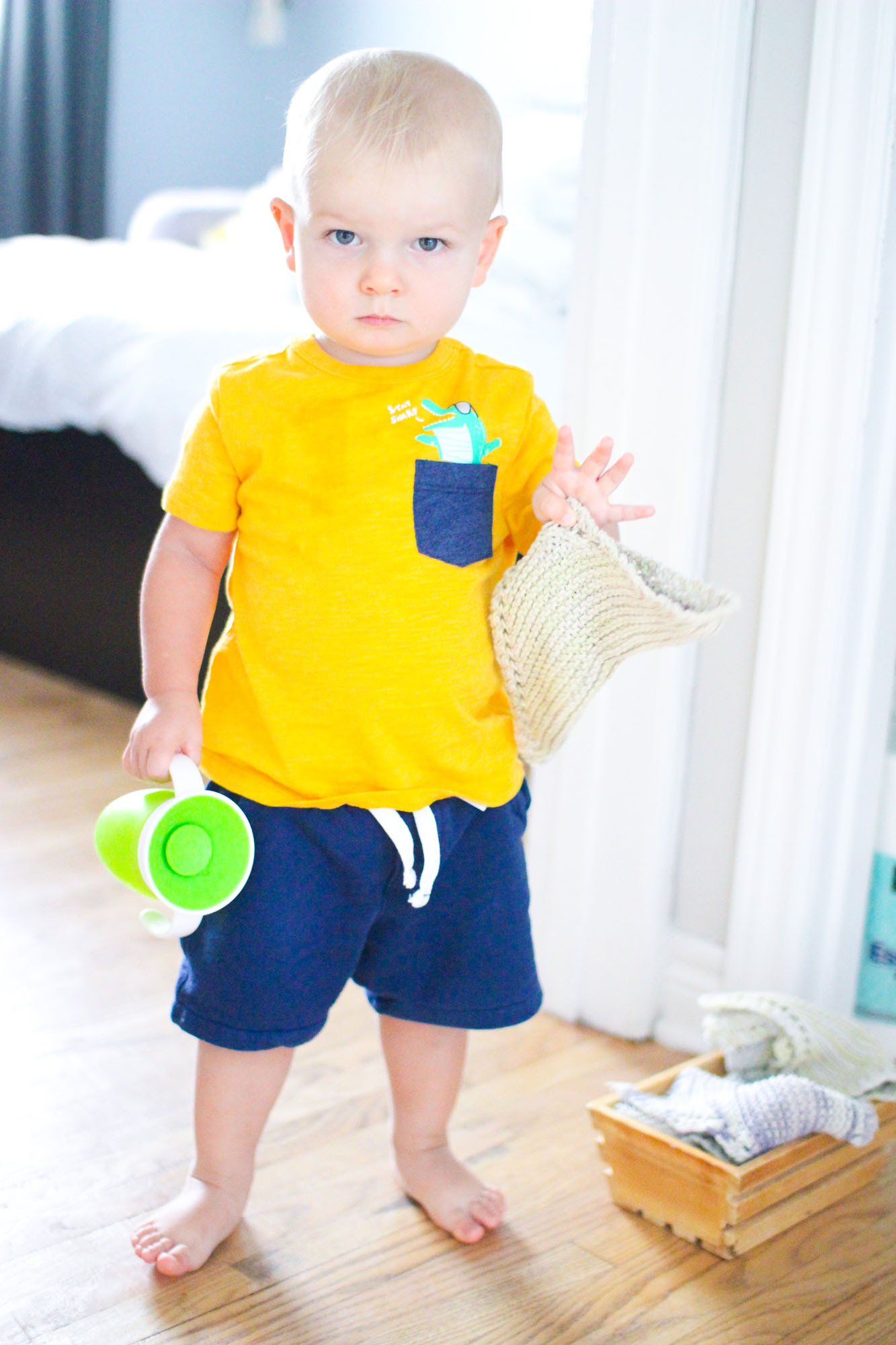
Here Lucas appears to be considering whether he should continue to help or not! But I find I can cultivate cooperation by leading by example as well as giving him the option of stopping should he choose to. I say “thank you for your help! It looks like you’re all done here.” At this point, he may decide to be done and move on to another activity, or shake his head no and continue to assist me with the task at hand.
In The Montessori Toddler, you discuss setting up a “yes” space for children to explore. What is that and what are the benefits?
“When children hear “no”, “don’t touch that”, “be careful” all the time, they start to ignore us. So instead of having to say no all the time, we can look at our home and make it a space that is safe and engaging for them to explore without us having to constantly correct them – a “yes” space. Even if we cannot make the whole house a “yes” space, I encourage families to set up a large area where both the adults and child know it is safe to play and explore. I like to sit on the ground to see what the space looks like from their height – then you can see if there are any tempting cords, power outlets, or things that you simply don’t want them to touch (like television controls or buttons) and remove them or make them inaccessible to them by finding a way to cover them. Both the adult and the child then can relax and enjoy their “yes” space.”
Should you like to see a tour of my “yes” spaces, the play spaces I set up for Lucas to explore and play in within my home, watch this video on Instagram or Facebook!
“The Montessori principles can be applied to any age child, teenager, and even with other adults. It’s a respectful way to be with others. I suggest starting as early as possible so that you can practice the ideas as your children grow. The solid foundation built in the first years built gives a solid base as the children get older. So it’s never too young or too old to start.”
Your book focuses on toddlers, but can the Montessori principles be applied to older children. If so, what age range would you recommend and why?
“The Montessori principles can be applied to any age child, teenager, and even with other adults. It’s a respectful way to be with others. I suggest starting as early as possible so that you can practice the ideas as your children grow. The solid foundation built in the first years built gives a solid base as the children get older. So it’s never too young or too old to start.”
What is a typical day for a toddler at a Montessori school?
“The children are free to explore when they enter the classroom. Some children will immediately choose an activity, others may stand or sit to watch for a while until they are ready to start. The children may work in the art and craft area, do some puzzles, threading, or other eye-hand coordination activities and others will choose some language vocabulary baskets. There is an area they can use for climbing, playing music, dancing, and balancing. And many real-life activities like food preparation, eating snack, or taking care of the plants. We end our classes with a circle time before getting ready to head home.”
Don’t expect perfection when having your toddler help with household chores. Have fun with it! Praise them with positive language for their efforts, make it fun by making up songs. This not only encourages them, but also keeps you as the parent from feeling impatient and overwhelmed.
What positive attributes have you observed in children that you would credit to the Montessori method?
“Montessori children learn that if they don’t know something, they can find it out. For example, they can look it up in a book, ask an older child in the class, their teacher or parent, visit someone in their community that may know more about the topic, or do an experiment. So Montessori children are very resourceful and love to find ways to solve problems. Famously the Google founders went to a Montessori school and credit part of their success to this ability to think for themselves.
Montessori children love learning. Rather than following the timeline of the teacher, each child learns at their unique pace, following their unique interests and abilities. A teacher or older child in the class can support them in areas they find difficult, and they become remarkably self-motivated learners. The love of learning is not stomped out of them by passively learning or rote learning facts. They make discoveries using concrete materials with their hands. A valuable way to learn.
Montessori children learn to care for themselves, others, and their environment. Whilst there is a strong academic curriculum for learning maths, language, humanities, etc, there are also many soft skills that Montessori children learn. To wait their turn, to look after their environment (for example, watering plants or cleaning up a spill), to learn to blow their nose, or care for a friend who has been hurt. It is heart-warming to see the children help each other, for example, children helping a friend who has spilled their activity on the floor, or coming over with a tissue to a child who is sad.”
How have the Montessori principles helped you when raising your two children?
“The Montessori principles have helped me be a calmer, more respectful parent. Rather than taking behaviour personally, it’s helped me see how I can support my children when needed and built a lot of connection with them. They are enormously capable and curious people who are my favourite people to spend time with. And it helped me – a naturally fast-paced person -to slow down and enjoy it all whilst also letting them grow as unique and responsible human beings.”
Lucas also helps us to unload the dishwasher at home. He of course needs direction but has learned where the containers and their lids go which also assists us when it’s time to pack up a snack to go outside or in the car. I can now ask him to “go get a container” and he’s able to do this on his own. Instead of childproofing these areas of my home, I set limits while also allowing him to exercise his independence. It’s a balance!
Your book primarily focuses on parents and their toddlers, but can grandparents and caregivers apply the Montessori techniques mentioned in the book?
“Absolutely. I have a section of the book about working with our extended family (grandparents and caregivers) and how they can also include these principles with our children. For example, when they spend time with our children to share their special skills and interests and finding a positive way for parents to work together with this extended family.”
Who are some famous Montessori alumni?
“There are many, for example, Larry Page and Sergey Brin (founders of Google), Jeff Bezos (founder of Amazon), Jacqueline Kennedy Onassis (former first lady), and Gabriel García Márquez (Nobel Prize-winning novelist) all attended Montessori schools.”
I’d like to sincerely thank Simone for taking the time to answer these questions and provide us with a snapshot of her extensive knowledge in regards to Montessori education.
Interested in winning a free copy of Simone Davies’ book, The Montessori Toddler? Head over to my Instagram account to win a copy of your own! It can also be purchased on Amazon. **contest now closed
Anna
Shop my Favourite Toys
Disclosures: A copy of The Montessori Toddler by Simone Davies was gifted to STRUCKBLOG for review and inclusion in this post. Thank you to Erin and Johanna for sending it my way and gifting a copy to one lucky contest winner!
Anna is a former teacher and Early Childhood Educator with a Master’s and Bachelor’s degree in education. Much of this learning and experience informs the content of her educational content.
All opinions and comments are my own unless otherwise stated. In this case, Simone Davies is quoted throughout as part of this Q&A. Content was provided by Simone’s communications team.
STRUCKBLOG uses affiliate links. For more information about this and the use of sponsored products please see my disclaimer page.
Want to see your brand/business reviewed on STRUCKBLOG? Visit my Work With Me page to see more of my work and to download a copy of my Media Kit.

